
















When you think about the game of golf, you think of it’s a game for White men. This is because the barrier of entry is high, and the techniques can typically only be sharpened with costly lessons over time. Although diversity within the sport is still questionable, more women are engaging in this activity and getting access to this secret world, and I am proud to say that one of our own is leading the pack.
Antiguan-born Canadian professional golfer Amaya Athill joined travel industry professionals for a day of fun on the links at this year’s Association of Canadian Travel Agencies (ACTA) Ontario Golf Tournament. On Thursday, July 13th, 2023, at Royal Ontario Golf Club in Milton.
With a 10-year background in law, our Woman Empowered is one of the few Black women to become a PGA professional in Canada. Since moving to Canada, a year ago, Athill has worked on a number of initiatives to make golf more inclusive. In her role as Manager, First Tee - Ontario with Golf Canada she works on creating opportunities for access to golf for children from historically underrepresented and marginalized communities.
She is a contributor for ScoreGolf Magazine where she highlights DEI initiatives in golf Canada-wide. She is also the founder of Black Women Golfers, whose mission is to ensure Black women - from beginners to more advanced golfers - have a space and community in the sport. I am going to share my interview with her, and I know you are going to find it inspiring.
When we choose our Woman Empowered features, we look for women who are not the norm, the ones who challenge societal thought, and pave their own trails regardless of what others think of them. They push boundaries, break glass ceilings, fail, recover, restart, and recalibrate. I couldn’t be prouder than to formally introduce to you our Woman Empowered, Amaya Athill.

“Before we even start Simone,” Amaya said excitedly. “I am a proud product of the golfing community in Antigua and pleased to represent my island in the golfing space in Canada. It’s an honor to have been invited by the Antigua and Barbuda Tourism Authority to support them in their mission to showcase all that Antigua and Barbuda has to offer to the travelling community. I really enjoyed myself.”
“So, Sis! You have to tell me how you got into golf. There is so much to your life resume, I am excited to hear it all. Where should we start?”
“Well, I was born and raised in Antigua, and I will admit. I travelled around a lot. I completed primary and high school in Antigua, and then went to the UK for University. At that time, my focus was school. I knew what I wanted to do, so I was determined. I started in law, 2011 and qualified as a barrister in the UK. I actually got to do six months of schooling in Jamaica and did the Antigua bar in 2012.
I got a Fulbright Scholarship to Georgetown University Centre in Washington D.C. and studied there for a while. I moved
back to Antigua in 2013 and started a position at Lake & Kentish Attorneys at Law. Kenny Ketish was phenomenal. He mentored me in civil litigation and believe me it was very taxing. Working alongside Kenny was an incredible experience; I felt nurtured in my growth. I did a lot of human rights, and this was for six and a half years.

I got a fellowship opportunity for one year in 2017. Interestingly enough, it was in Montreal, Canada. The fellowship brought together 12 leaders, dumped us in a mansion, and we talked about politics, governance and excellence. It was a wonderful year, wonderful experience.”
Amaya’s travels did not stop there. She moved back to Antigua in the summer of 2018, and worked at the Legal Aid and Advice Centre from 2018 -2019. She then moved back to England and worked at the Commonwealth Secretariat working in international law.

“It was an in-house counsel role until 2022, and then I moved to Canada last year,” Amaya tells me.
“All right Amaya! Let’s get into the juicy parts; tell me all about your golf genesis.”

“I started playing golf when I was five years old. My dad introduced me to the game, and he put me in the junior golf academy. I was part of a very robust program. I met a lot of friends, and I really loved it. We were able to travel to compete in various golf tournaments across the Caribbean. When it came time to university, we did not have the tools needed to get scholarships, so I gave up golf for 10 years.
The pandemic hit when I was working in the UK. I was stuck in the apartment for a year. It was terrible, and my mental health took a hit, so I turned back to golf. I bought golf clubs off the rack, went to my local golf course and started playing golf again.

This time, it was different; in Antigua everyone looked like me in the golf industry, but in the UK, I was the only woman of color. I felt isolated and kinda intimidated. I had to question myself; why was I feeling like this?
I connected with the African Caribbean Golf Association, and finally, once a month I had a community that I could golf with, play with, and I could network with.
I started to do a taster session (intro to golf session). Women would get to try golf, and I would offer a get into golf package where you would do six weeks with me to get into the sport. It was a really cool time; you can check out my Instagram page golf_interrupted. I started that in 2021.
I had applied for permanent residency after my experience in Montreal and was successful. During my process of moving to Canada, I was also in the process of applying (taking exams to transition my qualifications) for the bar in Canada.
“During that time, I applied for a manager position with First Tee-Ontario (Golf Canada). I saw this role and I thought, I am doing this already. I could do this as a side hustle. At that time, I was also kinda jaded when it came to my law career, so I contacted
the director via LinkedIn. The message was very simple, ‘This is who I am. I am interested in this role, can we chat?’ He was very open to the idea and took a chance on me. I had a job to come to when I came to Canada, so I felt secure when my husband and I moved here last April.”
When she started her position, Amaya recognized a common theme. Once again, she was the only African Caribbean woman playing the sport.
“This is why I found the Canadian Caribbean Golf Association and started playing with them regularly. I spent the last year growing in my role. I love getting underrepresented children in the sport.”
Amaya was very transparent about her challenges. I have to say that I really appreciated that.
“I am a good golfer, not a great competitor. When you are competing, you can get in your head a lot. All of your flaws can show up on the golf course. It can break you down. When I decided to turn pro, I had to take a Playing Ability Test. You have to shoot below a certain score, and I failed miserably. Believe me when I say that it was a humbling experience.
During this experience, I noticed that every pro that there was to work with was either a white man, or a white woman. I took the test again in May and passed. I am one of the few AfricanCaribbean women who is in the PGA. I also passed the bar in June.”
“Oh gosh! Congratulations Amaya! That is a lot that you accomplished in a short amount of time.”
“Thank you so much Simone. What I am really proud of is doing more for the sport by founding Black Women Golfers. We started meeting up in the off season and practiced golf together. My question was, how do we get more women in the sport?
We had an intro to golf session where 18 women came and were taught the basics of golf. Then there is a range meet up once a month and we practice together. Then once a month we have actual games. It is very new, we just started. We partnered with Brown Girl Outside World on this initiative; golf has been added to their calendar.”
What a sensational woman; she is everything that we want for our Women Empowered Feature. Amaya, keep being a light in
studies, their loss of motivation, or their disruptive behavior as they tried to cope with their feelings of unfairness.
It is the summertime, so most of our students are enjoying sleeping in, watching unnecessary amounts of Netflix, and probably sitting on their phones for ungodly amounts of time.
Things seem normal, but as a parent, there were some behaviors that you noticed in your child that concerned you last school year. They seemed to have challenges regulating their emotions, and you witnessed outbursts, tantrums, and unusual aggressive behavior. There were times when they seemed to question their worth, abilities, and value as a person.
During the school year, you have been called to the school on different occasions, because teachers had complained about your child’s behavior, and when you question them, you hear the feelings of resentment towards their teachers, administrators, or towards their peers who are treated more favorably. One thing that you do not want to see again is their disengagement from their
What we are dealing with here is a sinister, and previously overlooked aspect of our schooling here in Canada. Systemic racism and unequal treatment have manifested in various ways within our educational institutions. Reports have revealed that African-Caribbean students face disparities in discipline, academic achievement, access to resources, representation in the curriculum, and overall experiences in Canadian schools.
Disciplinary practices in schools have been a concern, with studies highlighting disproportionate disciplinary actions taken against African Caribbean students compared to their non-black peers. It has led to higher rates of suspensions, expulsions, and negative longterm consequences, such as lower graduation rates and increased involvement with the criminal justice system.
A report, “TOWARDS RACE EQUITY IN EDUCATION,” (April, 2017) exposed that in North American elementary and high schools, Black and Indigenous students are disciplined through suspension and expulsion more often than their peers. These same groups of students are also more often exposed to adversity and trauma such as community violence, racism and inequity.
According to a recent study, African Caribbean students in Southern
Ontario were twice as likely as white students to be suspended and four times as likely to be expelled. Indigenous students were expelled at over three times their representation in schools. Male students are suspended most often making up 77% of students who are suspended.
Disturbingly, research indicates that this racial disproportion is not primarily caused by differences in behaviors, but rather, differences in the way that students are treated and supported, and differences in the characteristics of the schools that African Caribbean and white students attend. One such treatment is the disproportion in suspensions and expulsions that pushes certain students away from post-secondary education and toward systems of criminal justice.

Suspensions and expulsions contributed to what is now referred to as the school-to-prison pipeline. Community workers noted that suspended and expelled students were more likely to drop out of school entirely and often got involved with criminal activity and, because they were not in school during the day, came under increased scrutiny of the police.
This disturbing trend is not new. In April 2000, then Minister of Education Janet Ecker released a Code of Conduct for Ontario schools. She then followed that up with changes to the Education
Act, granting legal force to the Code of Conduct giving principals and teachers more authority to suspend and expel students. The Act was passed in June 2000 and came into effect in September 2000.
The Act made expulsions and suspensions mandatory for serious infractions and set out a zero-tolerance policy for inappropriate behavior. This approach to school discipline was criticized for suspending students for minor incidents and for dealing more harshly with African Caribbean students.
To address these issues, Canadian provinces and school boards have implemented initiatives aimed at promoting equity, diversity, and inclusion in education. These initiatives include anti-racist policies, cultural competency training for educators, increased representation of diverse voices in the curriculum, and support programs targeting marginalized students.
Before we start our new school year, it is important to recognize that progress in addressing systemic racism and achieving equity in schools requires ongoing commitment and effort from all stakeholders (Parents of Black Children), including policymakers, educators, administrators, and the wider community. We have to actively work together, to create inclusive and equitable learning environments for all students, regardless of their race or ethnicity.
























• Regular access to technical training








• Empowered workshops
• Equipment for learning skills such as sewing and baking
The work of the non-profit, charitable registered organization Food For The Poor of Canada (FFPC) continues to make a difference in the lives of people in third world countries. Since it was founded in 1975, it has had a major influence in countries such as: Haiti, Honduras, Guyana and Jamaica.
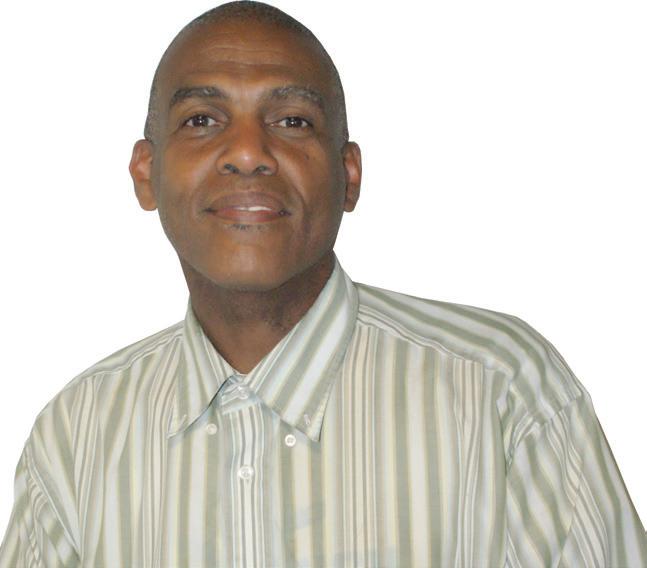


These countries have benefited significantly from their work in providing water purification tablets to deal with the cholera outbreak crisis and feeding children in Haiti, tackling food insecurity in Honduras, providing truck scholarships and in Guyana upgrading a STEM program and TVET training. In a recent newsletter, these developments were highlighted including changes to the management of the board.

It is in Haiti that FFPC has had a major impact. There has been international attention that has focused on the general destabilization of the social services infrastructure and cholera outbreak. FFBC was able to provide more than 14 million glasses of clean water to tackle this issue and deliver an estimated 900,000 aqua labs to affected families.
Children comprised over 50% of the cases and their lives were impacted significantly. One respondent notes, “Aside from God, the only reason I’m alive is because of the doctors who helped me and Food For The Poor who provided the aqua labs.” In addition, over one million nutritious rich meals were delivered to children with Okanagan Gleaners in April 2023 as well as 120 food baskets were given to families in June 2023.
In San Antonio Honduras, a Women’s Income-Generation Centre was funded by FFBC donors in 2021 and eventually opened in May 2023. The Centre is intended to provide services such as:
In many ways, these provide opportunities for women to enhance their basic literacy skills by acquiring additional development of business knowledge that enable them to pursue entrepreneurial activities. The centre serves the community as a central place for: board settings, religious services, medical outreach programs and other secondary community gathering. 1,800 students were able to benefit from the centre in areas such as: Choalapa, La Chorrera, Malanula, Corral de Piedra, La Estanzuela and Santa Rosita. The fact that more individuals are able to use the centre increases its utilization.
One of the positive things that FFPC does is awarding truck-driving scholarships to twenty-two students. Ten of these students were able to obtain their certification, which will provide them opportunities to obtain employment in jobs that will potentially pay them a high salary. The first part of the program involves a truck-driving simulator, and the second part involves actual practice on the road.
In Guyana, FFPC upgraded several things such as a school garden that was built in 2022, which will ensure that children learn how to grow vegetables. The expansion of the STEM Guyana Learning pod will improve access to these programs and provide students with technological devices such as tablets and robotic kits. In addition, TVET training will enhance the facility so that vocational training will be available to students in grades 7- 8.
In Jamaica, there have been 1,008,000 meals that have been distributed to schools, orphanages, and community partners. In addition, 75 mattresses were shipped to Jacob’s ladder which is a home for children with disabilities.
Anyone interested in learning about Food For The Poor of Canada (FFPC) can check out their website foodforthepoor. com







The pictures I see, the music I hear, and all the smiling faces of Jamaicans I know here in Toronto make me believe even though I have never been to the Island, that it is a beautiful place to behold.
After speaking with numerous people, especially recently, one thing keeps ringing a bell, and that is the fact that the ugly face of crime, homicide in particular, is on the increase on this beautiful island.
One such person who shares this view is a man whom I will call Charlie for security reasons.
Charlie is the founder of The Democratic Independent Government of Jamaica (DIGOJAM) and he is very dissatisfied with the way his country is being governed, and has decided that it is time to do something about it.

I had a lengthy chat with Charlie, and this man seems like he has a mission to accomplish.
“The floor is yours, tell me about the party,” I asked Charlie.
“I have selected Mrs. Carlene Ramirez Acosta to be the party leader,” he told me. “I was born in Jamaica, and back in the day we used to have principles, morals, and discipline, but now Jamaica has become the slaughterhouse of the Caribbean.”
Carlene Ramirez Acosta for those who do not know, is from Portmore in Jamaica and brings a wealth of real-life experiences as a wife, mother and trueblue entrepreneur who gets things done to the table.
“First of all,” Charlie said, “One of the moral obligations of a Prime Minister, or any government leader is to make sure the people are safe, but that is not happening in Jamaica.”
Charlie discloses to me that Jamaica’s present Prime Minister says that he does not believe in capital punishment, and as a result, criminals are running rampant on the Island feeling that there are no consequences for their crimes.
“When I look at the stats, it is saying that Jamaica is going to have less than 50% of the present population by the year 2095, so just like when Joshua led the people to the promised land, I am going to sacrifice my life to help,” Charlie said.
“That is some of the reasons why I formed this party. There are three parties in Jamaica and not one of them believes in the death penalty,” he told me.
“This is in the constitution and I am going to use it. People just go around killing people and think that this is good.”
“Something has to be done,” Charlie told me. He also revealed that barrels and containers coming from abroad are not thoroughly checked upon arrival on the island and as a result, guns are rampant.
“Jamaica is the hub of drug trafficking, and they distribute the drugs out to other countries. Last year over 1,000 tons of cocaine came to Jamaica, and everything went silent after it was found.”
“The gangs in Haiti come to Jamaica’s shores to exchange guns like M16’s and AK47s for cocaine,” Charlie revealed, “The Coast Guard does not have the detecting tools to protect its borders from criminals either.”
I asked Charlie how he would go about changing the present crime situation in Jamaica.
“I can’t tell the enemy my plan of action,” he said, “One of the first things I want to do is try and get a referendum out to the people to abolish the ‘monarchy rule.’ Democracy is based on our culture, our values, and who we are as a people, not what America, or England dictates.”
Charlie spoke on several things that are not done correctly in his country, like police brutalizing the citizens, seizing the goods from sidewalk vendors, and giving those goods to places like the
boy’s or girl’s home.
“The government allows those things and that is why the crime is so high. The government allows foreign businesses to exploit Jamaicans. They pay Jamaicans two dollars an hour, meanwhile, in America; they are paying workers $15 and $20. These are some of the things we are going to stop.”
The Democratic Independent Government of Jamaica is asking all freedom-loving Jamaicans to come out and vote the party into office in the upcoming elections. “Remember, it is your freedom that’s at stake here Jamaicans,” says Charlie.
Here is a short description of the party, which will be fully registered in a month.
Our Vision: Is to win the next upcoming general election to restore hope in our people by saving our democracy, which is in grave danger. Taking immediate action to tackle corruption and crime to make sure that the citizens’ lives are protected. Restore and strengthen our nation to fulfil our agendas by ensuring the rule of law. Fix our economy and infrastructures, restore freedom of liberty, guarantee transparency of the government, improve the efficiency and accountability to formulate nation-building strategies, so that our people can live peacefully, safely in a harmonious life.
lighted rooms where specific services are delivered.
It has been thirteen years since the Emery Keelesdale Nurse Practitioner-Led Clinic (EKNPLC) has been in operation. According to the promotional brochure, NPLCs are public-funded clinics designed to provide high quality, comprehensive and accessible health care. A Nurse practitioner (NP) is a registered nurse with an advanced university degree (Master’s degree or above), allowing them to practice independently. At these clinics, these NPs are the lead providers, working with a multidisciplinary team to ensure all aspects of physical, mental, and social health are prioritized.
EKNPLC hosted an open house on Tuesday, July 4th, 2023. The event was billed to show collective commitment to healthier communities. Danae Peart, Executive Director, talked about the history of EKNPLC and the NP-LED model of care. She mentioned some of the specific programs and services that are offered at the site and the individuals who are part of her dynamic multicultural team. She took the guests on a tour of the site and high-
Colleen Clark, NP, Chairman of the Board of Directors spoke at the open house. She introduced other members of the Board: Bruce Mann.Abi Kartheepan, Tracy Chinman, and Tanya Acadams. She stated, “The Board has recently upgraded our comprehensive strategic plan, we have outlined our objectives, and milestones, and crafted a roadmap for success. This plan emphasizes our commitment to providing exceptional care, promoting health and wellness to the unique needs of our patient population.”
She continued, “Our clinic serves as the gateway to a comprehensive delivery of primary care, led by compassionate Nurse Practitioners, and allied health. As you may know, clients who resort to this are cared for in all aspects of their health care, which includes: assessment, diagnosis, treatment options, diagnostic tests, referrals to specialists and ongoing follow up for their lifelong care.”
She states further, “I would like to extend my heartfelt appreciation and gratitude to our dedicated Executive Director Danae Peart who has been with the clinic six years, and has seen us through immense difficult challenges.
Danae’s visionary leadership, unwavering commitment, and exceptional management have been the driving force behind the realization of our clinic’s success. Her tireless efforts in overseeing day-to dayoperations, ensuring seamless coordina-
tion among staff members, and fostering a culture of excellence have contributed to the exceptional care we provide to our patients.”
The four strategic priorities of EKNPLC are:
Responsiveness to community needs
Anticipate and respond to the changing social determinants of health of those living in Humber Summit and Keele and Eglinton neighbourhoods.
Advancement of the Nurse Practitioner-Led Model
Advocate for the clinic’s model of care and advance its impact on residents in our communities.
Increased professional capacity
Build on our stature as health care professionals within the community.
Enhanced internal structures
Enhance our internal capabilities ensuring current and future employees and volunteers are better able to support EKNPLC and the work we do.
The four areas of the operational plan are:
Programmatic and service solutions
• Improve client engagement and feedback
• Engage with sector partners to iden-
tify needs and opportunities
• Provide targeted programs and outreach, e.g.: home visiting, STOP, flu clinics, diabetes management, and group workshops
Strategic partnerships and communication
• Increase or maintain EKNPLC presence at planning tables, community events, committees, etc
• Develop effective storytelling and communication pathways, e.g., social media, mailing lists, and stakeholder’s engagement
Quality of services
• Promote a culture of evaluating and improving the quality, safety and efficiency of our services
• Maintain a high standard of care that meets and exceed health care sector standards
Recruitment, retention and best practices
• Implement crisis-response strategies and sustainable operational policies
• Advance best practices for staff performance while attracting and retaining highly qualified staff
Anyone interested in learning about Emery Keelesdale Nurse Practitioner-Led Clinic can check their website: www. eknplc.ca
“Something has to be done,”
The understanding of climate change and its potential impacts has been developing for many years. That’s right, there is nothing new under the sun. Scientists have been studying the earth’s climate for decades and have gathered extensive evidence to support the existence of climate change and its link to human activities. That link is what we will be examining today, but from a different lens.
There is evidence that includes observations of rising global temperatures, melting glaciers, shrinking ice caps, changing weather patterns, and the increasing frequency and intensity of extreme weather events. If you do a simple Google, you will see that we have been dealing with these climate changes for a while now.
International efforts to address climate change have also been ongoing for years. The United Nations Framework Convention on Climate Change (UNFCCC) was established in 1992 as a global response to the issue. Since then, several international agreements, such as the Kyoto Protocol and the Paris Agreement, have been developed to mitigate greenhouse gas emissions and adapt to the impacts of climate change.
While climate change has been recognized as a significant global challenge for years, for some reason, its urgency and the need for action have become more prominent in recent times due to the increasing severity of its impacts and the growing awareness among the public, policymakers, and businesses. Now, there are all of these publicized efforts to: reduce greenhouse gas emissions, transition to renewable energy sources, and implement sustainable practices. According to our world leaders, they are crucial to mitigating the effects of climate change and ensuring a more sustainable future.
Now, here is the kicker; there is overwhelming evidence that climate change in recent decades is caused by human activities. Yes, they have, but the attention has been directed to what we, the people of this world are doing, and not being focused on the activities of those who are pushing this climate agenda.

This week, I want to share with the community the concept of geoengineering. Deployed at large-scale, geoengineering technologies have come with far-reaching and profound social, political, and environmental risks and impacts. The effects would – by nature of the intervention – be transboundary as well as potentially large-scale, unpredictable and irreversible. There is a lot to say on this topic, but I want to speak to those individuals who do not believe that the government can tamper with our weather. This is not a conspiracy theory; everything that I am writing in this article can be researched, and I am doing all of this so that the citizens of this world can ask one simple question; are our world leaders playing God?
Geoengineering is the deliberate large-scale manipulation of an environmental process that affects the earth’s climate, in an attempt to counteract the effects of global warming. For over 45 years, proposals for deliberate, large-scale manipulation of earth’s environment (or geoengineering) have been put forward as ways to potentially offset some of the consequences of climate change. For example: whitening clouds, injecting particles into the stratosphere, or putting sunshades in space could increase earth’s reflectivity, thereby reducing incoming solar radiation and offsetting some of the warming associated with increasing GHG concentrations.
Traditionally, geoengineering has encompassed two very different things: sucking carbon dioxide out of the sky so the atmosphere will trap less heat, and reflecting more sunlight away from the planet, so less heat is absorbed in the first place. The best-known form of solar geoengineering involves spraying particles into the stratosphere, sometimes known as “stratospheric injection,” “stratospheric aerosol scattering,” and “chemtrails.”
Scientists have studied natural ways that the earth has altered itself. Soviet climatologist Mikhail Budyko is credited as the first to suggest we could counteract climate change by mimicking volcanic phenomenon. One said example is the massive eruption of Mt. Pinatubo in the summer of 1991, which spewed some 20 million tons of sulfur dioxide into the sky. By reflecting sunlight back into space, the particles in the stratosphere helped push global temperatures down about 0.5 °C over the next two years. There is evidence that huge volcanic eruptions in the distant past had similar effects. The explosion of Mount Tambora in Indonesia in 1815 was famously followed by the “Year Without a Summer” in 1816.
We are going to take a look at a couple ways that climate is being manipulated. Let’s start with Solar Radiation Management. Solar Radiation Management is a speculative form of climate change response. It is when you reflect some amount of incoming solar energy back into space before that energy can be trapped by the gasses that produce the greenhouse effect. Think of SRM like a reflective shield, artificially providing regional or global cooling.
Then as mentioned above, there is the injection of sulfate aerosols that brings about a series of concerns. There is the potential for increased concentrations of stratospheric aerosols to damage the ozone layer, especially in the early spring months at high latitudes. A sudden increase in stratospheric sulfate aerosol could strongly enhance chemical loss of stratospheric polar ozone for several decades, especially in the Arctic. I find this interesting because I remember when I was younger that there was a concern about the thinning of the ozone layer. They told us to stop using aerosols, but it is okay to spray sulfate aerosols into the air. Hmmmm?
All right! Let’s move on to another topic that is not readily discussed, and its implications, global dimming.
Global dimming is the gradual reduction in the amount of global direct irradiance at the surface of the earth. It is a concept that has been observed since systematic measurements began in the
1950s. It was coined by an English scientist working in Israel, known as Gerry Stanhill, who first spotted these effects. There were measurements taken between the 1960s and the early 1990s, in collaboration with a wide range of data and independent studies, which showed that there was a substantial decline in the amount of the sun’s energy reaching the surface of the earth, hence global dimming. According to Gerry Stanhill, although global dimming effects varied from place to place, overall, the decline amounted to between 1% and 2% globally per decade between the 1950s and the 1990s. Global dimming is believed to be caused by the increase in particulates like sulfate aerosols in the atmosphere, all of which are attributed to human actions. Yep, the same actions were speaking about above. Peep that!
Global dimming, surprisingly, has an opposite effect to global warming as it produces cooling effects, so in essence, global dimming is beneficial to the environment, although it brings about elements of literal darkness on earth. The effects of global dimming vary by location, with some areas being badly affected than others. The most interesting discovery that I made was the fact that wildfires are a key component to global dimming. I find it curious that this year we have an abundance of wildfires in Canada. The wildfires have become so severe that entire cities are literally staying in some sort of dim light for days due to the amount of smoke in the atmosphere. There have been reports that some of these fires have been set on purpose, all around the time that climate change is being pushed mainstream. Again, I say hmmmm!
Let’s take a look at the effects of global dimming on our planet. I want you to pay attention here, because you are going to note that many of the effects are publicized as global issues; yep, global issues that are caused by our very own world leaders in their fight for climate change (cough, cough).
You know how we are always hearing about droughts; well, they are a result of the reflection of solar energy away from the surface of the earth, the water in the northern hemisphere is becoming colder. This is resulting in slow evaporation and the generation of far fewer water droplets. As a result of these, there is a reduction in the amount of rain reaching these areas of the globe causing drought and famine situations. The tragic consequences of these are miserable lives, disturbed marine life and deaths due to starvation
It has been established that the drought and famine of The Sahel, which killed thousands in sub-Saharan Africa in the 1970s was largely due to global dimming. The profound drought was first blamed on farmers in the region for degradation of the land and desertification, but that idea has since been disproved and global dimming is understood as the leading cause.
Again, as a result of global dimming, which reflects solar energy and heat that
was meant for the planet’s surface, the overall temperature on land goes down. Global dimming means there is a blanket in the atmosphere which prevents all the heat from the sun from reaching us. This results in colder days and an overall change in global temperatures.
Plants depend on light for photosynthesis. A decrease in sunlight or solar radiation will negatively affect photosynthesis in plants. The process in green plants uses light energy and converts water, carbon dioxide and minerals into oxygen and energy-rich organic compounds. Humans rely on the oxygen for survival, and so do other animals as well as bodies of water.
Global dimming is believed to be counteracting the actual effects of carbon emissions on global warming. This creates a catch-22 situation from which in defeating one evil against the environment, means exposing ourselves to another. If efforts are made to reduce particulate emission causing global dimming, it will enhance global warming and increase the global temperatures to more than double, making the planet uninhabitable.
Let’s pivot a little bit. I know that even after reading what I have shared, there are going to be disconcenters who are like, “Well, they are doing what they have to do to protect us, and the planet, but I still don’t think that the government is manipulating the weather.” Well, if that is the case, why is there a treaty that is purposed to manage the use of weather change, especially if it is going to be used as a weapon? Let’s talk about it.
1976 Convention on the Prohibition of Military or any Hostile Use of Environmental Modification Techniques
The Convention on the Prohibition of Military, or any other Hostile Use of Environmental Modification Techniques (ENMOD Convention) is an instrument of international disarmament law specifically intended to protect the environment in the event of armed conflict. It prohibits hostile use of the environment as a means of warfare.
Countries are not to engage in military or any other hostile use of environmental modification techniques having widespread, long-lasting or severe effects as the means of destruction, damage or injury to any other State Party (Article I, para. 1).
They include a non-exhaustive list of phenomena that could result from the use of environmental modification techniques: earthquakes and tsunamis; an upset in the ecological balance of a region; changes in weather patterns (clouds, precipitation, cyclones and tornadic storms); changes in climate patterns; changes in ocean currents; changes in the state of the ozone layer and changes in the state of the ionosphere.
I know there is a lot to digest here. Take your time, because I have more for you. Our goal is to provide you with the information needed to manage the climate change agenda that is being shoved down our throats. The only people who are disturbing our planet are the ones who are pretending to protect it.
The only people who are disturbing our planet are the ones who are pretending to protect it.
DiversityTalk and GreenPort united their efforts to create an unimaginable experience that celebrated Caribbean culture and heritage while actively dismantling the stigma surrounding cannabis.
Ganja, marijuana, weed, cannabis, pot, hashish, joint, blunt, spliff, call it by whatever name you want, no other plant has had more controversy around it than this versatile and healing herb.
“We were thrilled to be a part of this historic event. The Carnival Party Bus not only celebrated Caribbean culture but also signifies a significant milestone in the Canadian cannabis space, one of unity, healing and celebration. We are proud to collaborate with DiversityTalk to bring this event to life.” Vivianne Wilson, Founder of GreenPort
“Ahhhhhhh!” I took a pull and looked around me. Up and down the street, there were clusters of people huddled together talking, laughing and preparing for what was going to be an amazing night.
Toronto Caribbean Newspaper was invited to the second annual Carnival Party Bus for the Toronto Caribbean Carnival 2023 on July 15th, 2023. From 4:00 pm to 12:00 am, 45 local entertainers (Kirk Diamond, Solitair, Kapri), social media personalities, influencers (and me) were invited to celebrate and share our experiences of good friends, good times, and of course, great marijuana.
What set the Carnival Party Bus apart is the fact that it was organized by prominent Black leaders in the Canadian cannabis industry. The founders of
There has always been a negative connotation surrounding marijuana, especially in the Caribbean community. In 1913, ganja became illegal in Jamaica and the rest of the Caribbean followed suit. Ganja was restricted in 1915 in Trinidad and eventually made outright illegal in 1925. The crackdown on marijuana was further worsened with the persecution of Rastas in the mid-1950s and 60s. The government of Jamaica went as far as to issue an order to police and military to “Bring all Rastas, dead or alive.”

Marijuana is as sacred to Rastas as holy communion is to Catholics, and they do not see it as a drug. In fact, most Rastas are against drug use such as cocaine or heroin. Their religion forbids them from consuming substances that defile their bodies or restrict spiritual development, which marijuana does not.
Ganja is seen as an herb created by Jah. It is a tool used to open up the mind to receive knowledge and understanding on spiritual matters, to gain self-realization and experience the mystical. Unfortunately, the war on this healing herb continued for many decades. According to the UN World Drug Report, 2020, cannabis remains the #1
drug linked to incarceration, accounting for more than half of drug law offences, based on data from 69 countries covering the period between 2014 and 2018, and of course, these numbers affect the African-Caribbean community significantly.
There are thousands of AfricanCaribbean young men (and women) who have been locked up behind bars, persecuted and prosecuted because of this green, God-given herb.
The question is, why do so many Caribbeans still see marijuana as being a bad thing, and how do we debunk the myths and madness surrounding this herb and shed light on the missed opportunities in the Caribbean? One way is by educating the community on the incredible benefits of this powerful herb, and why not do so in an enjoyable way.
DiversityTalk is a leading health and social development consulting firm specializing in social equity-centered projects and community engagement initiatives. GreenPort is one of Toronto’s pioneering Black-owned cannabis retail stores, offering an environment that takes you “Back to the Roots” of culture and community while fostering a welcoming space to explore cannabis.
The two organizers of the Carnival Party Bus honored this rich heritage by providing guests with exclusive behind-the-scenes access to the Toronto Caribbean Carnival. Guests had the unique opportunity to explore Mas Camps and engage in meet-and-greets with revelers, carnival costume designers, section leaders from EPIC Carnival
Mas Band, and festival organizers. This year’s Carnival Party Bus was hosted by Ryan Chung, Producer at CBC Music, who kept the entire Carnival Party Bus crew laughing, and partying for eight hours.
We all met up at Greenport located at 686 College St., and we were greeted with high energy vibes and great food provided by the one and only Reena Rampersad from High Society Supper Club. After a couple of well needed tokes (cough, cough), we loaded the bus and headed to Epic Mascamp to do a walk through. Naturally, while there we had an opportunity to bubble up ourselves, and then we were back on the move. Our last stop was to New Dimensions Steelpan Yard, where we had a chance to dance a little more, eat a little more, and shop with vendors who were there.
This event represents an unprecedented opportunity for Toronto community members, particularly those impacted by the war on drugs, to come together and celebrate. I can’t end this without shouting out some of the great sponsors and partners that made this event as amazing as it was: Ontario Cannabis Store, Willy’s Jerk, Kronic Relief, Tropical Delight, High Society Supper Club, and the Neal Brothers. Outside of it being an absolutely pleasurable evening, it served as a powerful symbol of progress, acknowledging the historical injustices where cannabis was once used to target and incarcerate members of the community. Now, it provides a platform for celebration, unity, and healing during the vibrant carnival celebration.
paul@carib101.com
Since it was founded in 2019, Parents of Black Children (PoBC) have been actively involved in the fight against anti-Black racism in Ontario Schools. There has been progress made in those four years as they seek to fulfil their vision to create an equitable and peaceful educational experience for Black students.
Its stated mission is to eliminate anti-Black racism from all systems through transformational change, advocacy and accountability. In order to achieve this powerful vision and impactful vision, it seeks to become a voice for all parents of Black children, so that no parents stand alone in their fight for a just, safe, and equitable education for their children.
One of its successes is their involvement in the Student and Family Advocate Community of Practice which
is a collective of seventeen organizations that put Black families and students at the forefront. In addition, it has released several reports such as the: Halton Region Parents of Black Children Report, A Call to Action: Systems Abuse of Black students within Ontario’s education system, School Racism Reporting Tool, Parents of Black Children Needs Assessment, and the United Parents Project. Furthermore, there is support available to parents such as: education services and mental health, along with mentoring opportunities and tutoring for students.
Now that it has received its charitable status, PoBC seeks to provide additional support to Black children and families. One of the important things that PoBC has taken on is to call on the Ontario Human Rights Commission (OHRC) to conduct a comprehensive inquiry into anti-Black racism within Ontario’s education system.

PoBC tweeted on July 4th, “Despite providing multiple reports and written submissions, the OHRC refuses to acknowledge the significance of a holistic inquiry into anti-Black racism in our education system. We WON’T stay silent. It’s time to unite and demand the justice our Black students deserve.” PoBC has start-
ed a petition that calls upon the OHRC to reclaim its role as the conscience of this province by demonstrating the courage to speak the truth and act decisively.
Some of the things PoBC highlighted in a recent email communication include:
OHRC’s refusal to conduct a fulsome inquiry:
The OHRC’s approach has consistently disregarded the importance of further studies on the experience of Black children and youth. This stance is unsettling, particularly considering that the OHRC has initiated inquiries in cases involving the right to read and discrimination against Black individuals by the Toronto Police Service.
Intentional lack of engagement with Black community stakeholders:
Instead of understanding the crucial importance of conducting a comprehensive inquiry, the OHRC has dismissed our call to action by lackadaisical citing the recommendations the Black community advocates submitted to them after our last meeting. They also released a “What We Heard Report ‘’ summarizing a round-
table discussion that excluded the voices of Black advocates in Ontario.
Half-measured approach and report:
The OHRC’s approach to addressing antiBlack racism within education involved compiling a list of 83 existing reports, none of which provided a comprehensive inquiry into the educational experience of Black children and youth.
Duplication of work and waste of resources:
Adding insult to injury, the OHRC has now called for written submissions, duplicating the work we have already provided them. We painstakingly outlined our demands and shared victim impact statements, only to have our voices disregarded once again. This redundancy highlights the OHRC’s unwillingness to acknowledge the crisis faced by Black children and youth in our education system.
Anyone interested in learning about the advocacy work of PoBC can check:
Website: parentsofblackchildren.org
Facebook: Parents of Black Children
Twitter: @PoBCAdvocate
Instagram: @pobadvocate
“We WON’T stay silent.” Parents of Black children call on Ontario Human Rights Commission PAUL
full fixture schedule for the tournament is now in place, with New Zealand v Norway as the opening game on July 20th, 2023, and the final game taking place on August 20th, 2023.

ments)
• Christine Sinclair (Canada) will extend her record as the captain playing the most World Cup tournaments (5 including 2023)
2015 match against Nigeria) and most consecutive matches without a loss (17 wins/draws since 2011’s match against Brazil) in the World Cup
It is the skill, strategy, and teamwork that creates an exciting atmosphere, and the unpredictability of the game that keeps fans on the edge of their seats. The sport has the power to evoke strong emotions. Whether it’s the joy of scoring a goal, the disappointment of missing an opportunity, or the tension during a close match, soccer creates a range of intense feelings that fans find captivating.
Soccer is the most popular sport in the world and has a massive fan base. The sense of belonging to a larger community and the ability to connect with people from different cultures and backgrounds is a significant source of enjoyment for soccer fans. Soccer has a rich history and tradition that spans decades, and many fans have grown up with the sport and feel a connection to the teams, players, and moments that have shaped its legacy.
Yes, soccer fans. It is about that time! The world is anticipating the FIFA World Cup kicks off on the 20th of July!
32 nations will compete in the Women’s World Cup for the first time. Born as a 12-team tournament in 1991, it expanded to include 16 countries when the USA hosted it in 1999, and 24 when Canada hosted it in 2015. Following the group stage draw which took place in October 2022, the
All 32 teams who will take part in the FIFA Women’s World Cup Australia and New Zealand 2023™ have now been confirmed following the conclusion of the Play-off tournament. Portugal, Haiti and Panama will now join the likes of England, Spain and Germany in Australia and New Zealand, when the two co-hosts face-off against the Republic of Ireland and Norway, respectively. The USA travel to the tournament as record and reigning champions and are looking to become the firstever nation to win three consecutive FIFA World Cup titles in either the women’s or men’s game.
Ahead of the 2023 FIFA Women’s World Cup, Action Network has collected all of the potential records that could be broken at this year’s World Cup.
Marta (Brazil) could extend her record for the most individual goals scored, Hege Riise (Norway) could become the first person to win as a coach in Women’s World Cup after winning player of the year, Casey Phair (South Korea) will most likely become the youngest player to ever play, while Vanina Correa (Argentina) will become the oldest goalkeeper.
There are a few individual records that were noted that we thought our readers would be interested in knowing about;



• Marta (Brazil) and Christine Sinclair (Canada) could extend their record as the players (male or female!) who scored in the most World Cup tournaments (both had scored in 5 tourna-
• Onome Ebi (Nigeria) or Christine Sinclair (Canada) could extend their record as the player with the most matches lost in Women’s World Cup (10 matches lost) - they are currently tied for this record alongside Florence Omagbemi (Nigeria), who is not playing this year
• If any player scores 11 times, they would break the record currently held by Michelle Akers (USA) for the most goals during one tournament who scored 10 times during the 1991 Women’s World Cup
• If any player scores 6 times, they would break the record for the most goals scored during one match currently held by Michelle Akers (USA) and Alex Morgan (USA) who both scored 5 goals - Akers in 1991 against Taipei and Morgan against Thailand in 2019
• Any of the older players could break Formiga’s record for the oldest goal scorer (37)
Now, let’s take a look at some of the team records:
• USA team could extend their record (4 wins) as the country with the most wins at the World Cup (they won in 1991, 1999, 2015 & 2019)
• USA could join Germany as the only defending champion to not get past the quarterfinals
• USA could extend their record for most consecutive wins (12 wins since
• After playing 8 times, Nigeria could make it to the top 4 for the first time
• Nigeria could extend their record for the total number of losses (19) as well as the most goals conceded (63)
If any of the following teams place second, it would mark the first time ever that a country places second in Women’s World Cup for a second time - USA, Germany, Japan, Norway, Sweden, Brazil, China, Netherlands. At the moment, USA and Germany are tied for being the top-scoring teams in the most World Cups (3 times each, USA1991, 2011, 2019 & Germany - 2003, 2007, 2015) - either of them could break the tie and become the sole holder of the record.
There are eight teams debuting at this year’s Women’s World Cup (Philippines, Vietnam, Morocco, Zambia, Panama, Haiti, Portugal, Republic of Ireland) - any of those could join the USA as the only team to win during their debuting year (bearing in mind that the first time that USA won was the inaugural year of the tournament). Any of the following countries (that had already debuted in the past) could win their first match ever: Argentina, Costa Rica, Jamaica, South Africa, New Zealand. This year’s world cup could become the most attended women’s sporting event ever, judging from the ticket sales, which would surpass the record currently held by Women’s World Cup 2019: France attended by 1.131 million people.
Soccer fans get ready! Another World Cup is just around the corner!
worry about the misuse of their information, surveillance, or breaches of privacy.
simone@carib101.com

“There’s an opportunity for a separate space where creators and public figures can share timely updates about their interests.” Team Meta
When a new technology emerges, it often brings unfamiliar concepts, features, and implications. People may fear what they do not understand, which can lead to apprehension and resistance. There are so many new technologies that can alter the way we interact with each other and the world around us. For instance, social media and smartphones have changed communication patterns and have contributed to feelings of isolation or addiction. It is important to note that many new technologies involve the collection and processing of personal data, and people may
Well community, there is yet another social media platform that is taking the world by storm. Meta’s Threads app has been building up hype in the last few months, and the Twitter alternative is now available internationally. What I did not know is that Twitter has a growing number of disgruntled users.
Since Elon Musk took over Twitter, we have seen a lot of similar apps come and go, two examples are Bluesky and Mastodon. Bluesky is a text-oriented social media platform on which users can post messages as long as 300 characters. Like Twitter, the messages posted on Bluesky appear on a newsfeed displayed to users. The app is available on iOS and Android. Mastodon was founded in 2016 by German software developer Eugen Rochko. Unlike Twitter, Facebook, Reddit or any other popular social media site, Mastodon is a nonprofit, meaning that, ideally, its goal is to benefit the public, rather than shareholders.
However, we suspect that Threads will likely trump them all and gain a pretty solid user base straight from the get-go. The new platform has been
described by Meta as “A stand-alone decentralized social network for sharing text updates.” It is a place where users can share text-based updates and follow people and organizations that are important to them.
Threads has proved so successful, that over five million users signed up for it in the first few hours it was live, and now they reportedly have over 10 million users signed up. While the burst of signups doesn’t necessarily mean people will use Threads long term, the milestone is notable. If you look at the success of OpenAI’s chatbot ChatGPT, which kicked off an AI rush late last year, they surpassed 100 million monthly active users after two months. At the end of 2022, Twitter had 259 million daily active users. Instagram has 1.39 billion daily active users.
Threads launched in more than 100 countries, but its release has been delayed in the European Union, reportedly due to data-sharing concerns between Instagram and Threads. Meta is also reportedly blocking attempts by people in the EU to access Threads using a VPN, telling TechCrunch in a statement that, “We’ve taken additional steps to prevent people based there from accessing it at
this time.”
So how do you get onto Threads?
It’s pretty simple. If you’ve already got an Insta account, your username will be reserved for you over on Threads, so once the app goes live, you’ll be able to hop right on without any hassle and post away. You can log in with your Instagram account and go through your existing follower list to choose exactly who you want to follow on Threads, hopefully avoiding an immediate cluttering of your news feed. You’ll also see the familiar like, comment, repost (in this case perhaps rethread?), and share buttons at the bottom of each post.
The Threads user interface is pretty basic for now. Everything you need you can find at the bottom in the navigation bar: home, search, new thread, activity and profile.
I want to note that while some fears about technology may be justified, others may be based on misinformation or misconceptions. The Toronto Caribbean Newspaper wants to address these concerns through education, and transparency that we hope will help alleviate fear and foster a more informed adoption of new technologies.

2016. He became the principal anchor of the renamed CBC Toronto News and became a part of CBC News Toronto.
In many ways, Dwight Drummond has shattered stereotypes and images as he ascended in his broadcasting career. He was born in Jamaica and after he migrated to Canada in 1976 grew up in the Jane and Finch neighbourhood.

Dwight started his broadcasting career in 1991 at Vision TV then to CBLT, the CBC Television’s station in Toronto. He capped it with the best newscast on City News for a lead story, and a top story for City’s Edward R. Murrow win for best newscast. He then moved on to join CBC Toronto News as a news anchor and subsequently joined CTV’s Your Morning in
Dwight has received many accolades. He was the recipient of the 2021 Canadian Screen Award for Best News Local, and received a nomination in 2022 for the award. He was awarded the Toronto Metropolitan University Alumni Award of Distinction in 2013. He received an honorary degree in 2015 from Humber College and the 2015 Canadian Screen Awards. In addition, he was inducted into TMU’s Faculty of Radio and Television Arts’ Wall of Fame.
In his convocation speech on Friday, June 16th, to the graduating students Drummond recalls living at 10 Turf Grassway, apartment 204 in the public housing communities in Jane and Finch areas while his mother, Ermine Drummond worked odd jobs. He recalled covering the story of a three-year old girl who was accidentally shot by a bullet that was intended for her father who lived in the same apartment. This triggered sur-
vivor’s guilt in him with respect to, ”How we started at the same place, both ending up in the same courtroom under such strikingly different circumstances.”
Drummond was aware of the odds against youths making it out alive from the areas. He states, “We are examples that it is possible, but it is so much harder to succeed, when challenges outnumber opportunities. We need to create opportunities where children make it, not in spite of the odds, but because we are able to remove some of those odds. Worth and potential should not be based on what we look like. Ranking of human value cannot be based on how much pigment is in your skin.”
Drummond was motivated to read by his mother who regularly attended parent-teacher meetings. She fostered in him a love for learning and books. He reflects, “There is a direct correlation between the culture in the household where I was raised and my career. Education was valued and learning was encouraged.”
Drummond shared how he graduated as an Ontario Scholar, was interviewed by Dr. Bob Gardiner, and was encouraged by Bill, his RTA presentation teacher. He recalls Stephen Hurlbut, VP at CityNews, telling him, “People are only encouraging you to do sports because you are Black. You can and should do news. I’m glad I listened. Think of all the years of futility I would have to endure covering our Toronto Maple Leafs.”
Drummond shared many personal memories of being called the Nword and being taken down at gunpoint for driving while Black, as well as the numerous occasions that he has been handcuffed. He states, “When I became a reporter, I went from the guy yelling at the media to get out of my neighbourhood to the guy being yelled at to get out of the neighbourhood.”
Drummond advises graduating students to, “Celebrate this transformative moment in your life. Now, onward and upwards, achieving what your talents will allow.”
simone@carib101.com TC REPORTER

“Tomorrow is the opening day! I have to get ready, but tonight, I have to get ready for the mix and mingle at the Governor General’s house.”
Naturally, I had to make sure that I was representing; it would be my first night interacting with other media houses, diplomats, governor’s, government officials.
It was my second night in St. Lucía; the Toronto Caribbean Newspaper was invited to the 53rd Annual Meeting of the Board of Governors of the Caribbean
Development Bank, (CDB) held June 2023 in Saint Lucia. Twas the night before the opening ceremonies, and we were headed to Mr. Cyril Errol Melchiades Charles, Acting Governor-General of Saint Lucia. His Excellency was sworn in at the Official Residence of the Governor-General on Thursday, November 11th, 2021.
During his professional career which spans over 30 years, Mr. Charles served in the public service in various capacities, the longest being as a tax professional within the Department of Inland Revenue for over 25 years. Mr. Charles has also been involved in the work and contribution of the Lions Club in Saint Lucia for over 20 years.

Members of the press, and special guests were invited to the prestigious Governor’s mix and mingle, an exclusive event hosted at the Governor’s Mansion. It was a night of elegance, celebration, and meaningful connections in the com-
pany of distinguished guests, community leaders, and prominent figures from various sectors.
I met up with members of the other Caribbean media outlets at the front of Bay Gardens Hotel. From there we received a police escort and arrived in style at the Governor’s Mansion. We were greeted with a glamorous red-carpet reception, and His Excellency, and his wife greeted us at the door. It was a personable touch that was much appreciated.
During the night, I had the opportunity to mingle with influential guests, including government officials, business leaders, philanthropists, and cultural ambassadors. We enjoyed a wide array of delectable hors d’oeuvres and beverages during the cocktail hour, and I had a chance to foster connections and stimulate engaging conversations with some of the guests who were there.
It was not just great food, but
also captivating live performances, featuring St. Lucia’s talented musicians, singers, and performers. Guests had a chance to enjoy a range of musical genres and artistic expressions, which created an enchanting ambiance throughout the evening.
The great thing about this event was that I had a chance to interact with diplomats, which provided valuable insights into global affairs, diplomacy, and different perspectives. I thought that this was a great idea to get the guests warmed up for what was to come. It offered a great opportunity to network, and open doors to future collaborations and opportunities.
When I got back to the hotel, I was ready. I was thankful for the night because it had prepared me for what was to come. Tomorrow, the opening ceremonies.
paul@carib101.com
The death of Keren Braithwaite on Thursday, June 22nd, 2023, will be greatly felt by many who knew her personally as well as her family and loved ones. She was born in Antigua and came to Canada to attend graduate school on a Commonwealth Scholarship in 1967. She saw firsthand the racism Black students experienced in the educational system and the lack of opportunities they faced.
These experiences prompted Keren to develop the Transitional Year Programme (TYP) at the University of Toronto with the help of fellow graduate students. As co-founder, instructor and associate director, she worked there until
her retirement in 2003. The TYP’s purpose was to provide university access to Black and First Nation students, single mothers and students from poor neighbourhoods. Keren’s efforts redoubled after she became a parent and she worked vehemently with other committed community stakeholders to ensure that changes were initiated at the Toronto Board of Education.
This culminated in the formation of the Ontario Parents of Black Children (OPBC) with other parents supported on November 25th,1980. Keren was one of the founding members of the Antigua and Barbuda Association of Toronto (ABAT) and was inducted in 2006 as an Officer of the Most Distinguished Order of Merit (Antigua and Barbuda).
On Thursday June 26th, 2023, Wendy Braithwaite, daughter of Keren posted a message on Facebook regarding her mom’s death. It read, “We are sad to share that our beloved mother, Keren Braithwaite, has passed away. We are thankful for our beautiful mother who has meant so much to our family, to her
loved ones, and to her community. We will miss her greatly, but are proud of her life and legacy. We are comforted to know that she is now with the creator, and is amongst the ancestors.”
Professor Lance McCready, current director of the TYP stated, “We, the current faculty, staff and students of the TYP wouldn’t be here if not for the love, tenacity and courageous activism of Keren Braithwaite.” With respect to her leadership of the TYP, he notes, “Keren Braithwaite helped establish TYP over 50 years ago and was awarded a Ludwik & Estelle Jus Memorial Human Rights Prize for this work. She made positive and lasting contributions to higher education access in Canada, work that supports human rights and promotes: equity, diversity, and inclusion.”
In 1996, Keren edited the book, “Educating African Canadians,” along with Carl E. James. Professor McCready highlighted the edited volume “Access and Equity in the University: A Collection of Papers from the 30th Anniversary Conference of the Transitional Year

Programme,” University of Toronto, published by Canadian Scholars Press. He concluded, “I hope that Keren Braithwaite is in a peaceful place, feeling all of the love, respect and inspiration she gave us. I’m so glad I was able to meet and speak with her a couple of times over the years when I served as Director. I am sending peace, love, light and healing vibes to Keren, family, friends, and colleagues.”
Keren’s funeral was held on Saturday, July 8th, 2023, at Revivaltime Tabernacle in Toronto. It was officiated by Rev. Patrick Reid who was a personal friend for many years. There was a great turnout of community members. Black elders, teachers, former colleagues, family members, scholars and friends. Special tributes were read by John Mills on behalf of ABAT and Francis Atta on behalf of the TYP. Reflections were read by long-time friends: Constance Cudjoe, Muriel Clarke and godchild, Ewurama Sackey. The obituary was read by Keren’s son, Edward and the eulogy was delivered by Keren’s daughter, Wendy.
simone@carib101.com
 TC REPORTER
TC REPORTER
“Taxpayers have paid for hundreds of thousands of pay raises, hundreds of millions in bonuses and for tens of thousands of extra bureaucrats and the government still can’t meet half of its own performance targets. Trudeau needs to take some air out of the ballooning bureaucracy.”
Franco TerrazzanoI received an email from Franco Terrazzano (Federal Director, Canadian Taxpayers Federation),

“Turn off the hiring machine: Trudeau adds 98K bureaucrats to payroll. Our Investigative Journalist Ryan Thorpe discovered the feds hired more than 98,000 employees since Prime Minister Justin Trudeau came to power. That includes an extra 21,290 staff added over the last year. The full story is below. Please let me know if you have any questions.”
“Huh! I thought to myself.
“What is going on here?” Was I going to go down this rabbit hole? Of course, I was.
Apparently, the federal government has a habit it can’t seem to break: hiring more bureaucrats. Since Prime Minister Justin Trudeau came to power in 2015, he reportedly has added more than 98,000 new bureaucrats onto the government payroll, and that trend shows no signs of slowing down, with 21,290 extra staff added between March 31st of 2022 and 2023.
“Was there a bureaucrat shortage in Ottawa before Trudeau took over?” Franco Terrazzano, Federal Director of the Canadian Taxpayers Federation, said. “Canadians need a more efficient government, not a bloated government full of highly paid bureaucrats.”
The federal government now employs 357,247 bureaucrats, according to the latest data from the Treasury Board of Canada Secretariat, released on June 26th, 2023. To put that in perspective: there are now more than 98,000 extra government employees on the taxpayer dole than there was when Trudeau came to power.
It isn’t just the size of the federal bureaucracy that’s ballooning – the cost is too. The cost of the federal bureaucracy grew by 31% over the past
two years, according to an April 2023 report from the Parliamentary Budget Officer. The government handed out 802,043 raises to federal bureaucrats from 2020 through 2022, according to internal government records previously obtained by the CTF.
Given the rash of bonuses and pay raises, on top of the spate of fresh hires, Canadians might wonder: how well are things running in Ottawa? Well, the reviews are in, and the results aren’t good.
Less than 50% of the government’s own performance targets are consistently met by federal departments within each year, according to a March 2023 report from the PBO. Despite this, the average annual compensation for a full-time federal bureaucrat is $125,300, when pay, pension, and other perks are accounted for, according to the PBO.
Meanwhile, data from Statistics Canada suggests the average annual salary among all full-time workers in Canada was about $64,000 in 2022. Some of us are barely surviving, living paycheck to paycheck.
I want readers to think about this every time you check your bank account, go to the grocery store, and try to figure out how you are going to make ends meet.

The more things change the more they remain the same. This saying has never been truer than in the case of the pushers of the poison that is called a C-19 vaccine.
From Quebec to Toronto this so-called COVID injection is still being peddled to the public as we speak, and I am not hearing any outrage after all the deaths and illnesses associated with this untested “kill shot.”
Imagine more than 26 teams of scientists were engaged in evaluating the COVID-19 injections. They found metals such as: gadolinium, aluminium, cesium, strontium, and tungsten in the blood of the vaccinated, these are well known to cause death, or cause serious side effects, yet Canada’s so-called government is quietly, but vigorously pushing these products on its citizens.
Dr David Nixon discovered that the Covid-vaccinated are emitting a MAC address, and he found fibres in the blood that La Quinta Columna Laboratory had described as graphene oxide.
Dr. Mihalcea investigates the effects of vaccines and the coronavi-
rus. While investigating, she found that it reduces up to 47% of the electrical connectivity of the blood. This doctor said, “Humans are being intentionally robbed of their life force.”
When these so-called medical professionals tell the people they have injected that they are suffering from long COVID, should they believe them? The short answer is no.
Here are some of the symptoms of long COVID: chronic fatigue, and memory problems, in people as young as 20, dementia-like symptoms with word-finding difficulties, brain fog, extreme anxiety, and depression, which we know shortens lifespan. Am I communicating here? This concoction robs you of your life force, yet Canada’s government won’t let up.
People with long COVID cannot even walk upstairs without feeling short of breath or getting heart palpitations. Other symptoms include heart attacks, or blood clots.
Dr Peter Garyaev, who was a nominee for the Nobel Prize in 2021, said, “One could via 5G enfold and unfold pathogenic genes in coronavirus and make it more virulent.” He died two weeks after he said so.
That said, we the many can never let the few dictate our thoughts and actions by fear mongering us into submission. This will be the biggest and most deadly mistake we as a people will ever make.
While we are on the subject of
fear mongering, none of this mess the world is in presently would not have been possible had it not been for the so-called mainstream media. In their quest to be paid and fully funded these “factories of lies” have led the world on a suicide/depopulation program constantly parroting the: WHO, UN, Big Pharma, and WEF (World Economic Forum) talking points religiously. They will never say how many Canadian doctors; nurses and medical interns have died from the so-called vaccine. They will never show the death toll daily on the VAERS reporting sites, never tell the public how many young: hockey players, bodybuilders, footballers, and even their own media colleagues are dropping daily on the news set.
These mainstream TV stations, newspapers, and radio stations here in Toronto all have ties to government funding, and sadly money comes first, second, and third... truth dead last. They are being paid to keep this part a secret while distracting the public with wildfire stories, fires I might add, that were intentionally started. Let me guess probably all that I just mentioned above is misinformation and disinformation.
Stand up Canada! Say no to the murdering of your families through a depopulation plan disguised as a vaccine.
Canadians need a more efficient government, not
highly
 DIANA GIFFORD-JONES
TC HEALTH REPORTER
DIANA GIFFORD-JONES
TC HEALTH REPORTER

Everyone wants a safe, effective, and accessible supply of the products that keep us healthy. Doctors and patients need proven drugs. People seeking to prevent illness with natural remedies also need good products. But governments trying to ensure quality are putting measures in place that will limit the variety of supplements, make them more expensive, and make it harder for smaller companies with innovative products to compete.
Natural products like vitamin C, fish oil, magnesium, calcium, and many other supplements are ingredients to good health. For the cost of a cup of coffee, daily
supplementation can address deficiencies in the diet, add antioxidants, reduce inflammation, support the immune system, build bone, etc.
For example, vitamin C and lysine in high doses help maintain the cardiovascular system and support joint health, teeth, gums, wound healing, and more. The key is collagen. Vitamin C is required to manufacture healthy collagen, the glue that holds cells together, just like mortar is needed for bricks. Lysine, like steel rods in cement, makes collagen stronger. A lack of vitamin C and lysine results in poor collagen and weak arteries.
You can make one of the best investments in your health by taking a highquality fish oil that has been formulated for better absorption. There’s no point in having fish oil go right through the digestive system missing the benefits to heart health and better brain function.
Women over 50 can benefit from calcium supplementation to reinforce bones at risk of osteoporosis.

New measures by government
regulators are making it harder for the small businesses that bring a variety of helpful products to market. Why? Well, for all the good intentions to ensure safe, effective, and high-quality products, governments are creating the conditions that will wipe many good players out of business. Adhering to new regulations will jack up the costs to produce the products we use for health promotion – natural vitamins, minerals, oils, herbal remedies, probiotics, and so on. It means higher prices for consumers.
One of the most important places in your community for you to do well by your health is your local health food store. There, you can count on finding carefully selected products on the shelves that have your health at heart. The people who work in these stores are often specialists in nutrition, natural supplements, and holistic approaches to health. Our advice is to become a regular customer in a store near you.
Also, don’t be complacent when governments don’t understand how their good intentions are negatively impacting your best interests for healthy living. A con-
sultation is currently underway in Canada offering consumers an opportunity to comment on new regulations Health Canada is imposing. The changes affect labelling and the process for product approval. The question is, why can’t governments find ways to ensure adherence to safety, quality, and valid claims without wiping out good companies and elevating prices further for natural products? Why make it easier for big international companies to put small Canadian companies out of business? Readers in Canada should visit your local health food store to learn more and get in touch with your member of parliament before July 26th to express your view.
There are benefits to our global society. But we need to swing the pendulum back closer to the values and conditions that support community-based businesses focused on health promotion. Your local health food store is like a family doctor for the community. They know their customers and they care. Governments should see them as allies and find better ways to support the natural health industry.
ing steps were initiated to improve literacy outcomes and support learning recovery:
• Revising the elementary language curriculum and the Grade 9 English course with scientific, evidence-based approaches that emphasize direct, explicit and systematic instruction and removing references to unscientific discovery and inquiry-based learning, including the three-cueing system, by 2023
New strands that are introduced in the revised curriculum include:
• Strand A. Literacy Connections and Applications
• Strand B. Foundations of Language
• Strand C. Comprehension and Responding to Texts
• Strand D, Composition: Expressing Ideas and Creating Texts
commons and teacher-librarians play in the overall literacy process is emphasized. As well, there is the alignment of cross-curricular learning with newly released curricula to take into consideration mathematics and science and technology.
Finally, with respect to assessment and evaluation, the achievement chart is revised to ensure that it reflects the new learning areas in the updated curriculum.
The announcement by the Ontario Ministry of Education that it had updated the Grade 1-8: Language Arts curriculum caught many education stakeholders by surprise. The introduction to the changes in the curriculum reveals that they were made as a result of the Ontario Human Rights Commission Right to Read Inquiry report in 2019. The OHRC’s report made 157 recommendations to the Ministry of Education, school boards and faculties of education with respect to steps that can be taken to tackle deep issues that impact the right to learn to read.
The Ministry of Education released a response on March 11th, 2022, in which it outlined that it will be implementing immediate steps to improve student literacy and making longer-term reforms to modernize the way reading is taught and assessed in schools with a focus on phonics. The follow-
• Revising the elementary francais, Actualisation du français, Programme d’appui nouveau arrivants, and the Grade Francais curriculum by September 2023
• Releasing a science-based guide for education in spring 2023 that will support effective early reading instruction
• Collaborating with partners, including faculties of education, on professional development for educators to ensure they are learning science-based reading instruction methods
• Beginning development of a Frenchlanguage reading intervention program
• Engaging with parents and sector partners on a longer-term response and developing accessible, parent-friendly resources on literacy skills
In addition, the curriculum includes new instructional approaches to language such as:
• Evidence-based systematic and explicit instruction
• Multimodal literacy instruction
• Oral communication instructional practices
• Universal Design for Learning and differentiated instruction
• The tiered approach to language and literacy instruction
There are guiding principles and subjectbased instructional strategies for students with special needs and students with disabilities. In addition, in order to help English language learners there are researchinformed pedagogy to support students who are culturally and linguistically diverse. The essential role that the library learning
The Ontario government hopes that these significant changes to the elementary school curriculum will address longstanding and systematic issues that have created: challenges, obstacles and impediments for many students in Grades 1-8. Many education stakeholders have expressed concerns that the government seems to have made these significant alterations without proper consultations and this could potentially impact its implementation.
There is cautious optimism that the Ministry of Education will release the upcoming future: workshops, training, resources and materials over the summer to help teachers prepare for the school year 2023 -2024. If this is not done, then Ontario teachers will not be prepared to provide the best quality lessons to students in September.
simone@carib101.com

The atmosphere inside the stadium was electrifying. I heard the chants, cheers, and colorful displays of team colors before I even stepped into the BMO stadium. The collective energy of thousands of fans had transformed BMO stadium into a cauldron of emotions. The excitement of a soccer game is truly electrifying. From the moment the players stepped onto the field, there was a palpable energy in the air that transcended the boundaries of the stadium and captivated fans throughout the city of Toronto.
I have always been one of those people who have only seen the games on television, but had never taken in the intensity and atmosphere of a Toronto FC
that took place on July 8th, 2023. Brenda Foreman (Honorary Consul St. Kitts and Nevis) and I had the opportunity to watch the game in style with Adidas as the brand celebrated the launch of their new Energy Kit - inspired by Caribbean Carnival culture.
I have to admit; for the first time, it was something else watching the game live in the VIP section. The Adidas section was hype, and I had the opportunity to experience the look and feel of the brand’s new kit and the Caribbean culture at large.
I think that after attending the game, I see why Toronto FC has such a passionate fan base. There is a sense of camaraderie and belonging that radiated from the fans around me. The rivalries between teams added an extra layer of excitement to the match. I learned that night that soccer is not just about physical prowess; it also involves intricate tactics and strategies. Fans around me were analyzing the tactics employed by teams, the formations, and the individual roles of players on the field.
For 10 years, supporters of Toronto FC have been renowned for being wildly passionate about a mostly pitiable club. TFC supporters realize that their direct participation in supporting the

team, through buying tickets and going to games and cheering, actually makes a difference for the team on the field.
Founded in 2006 by Maple Leaf Sports & Entertainment, the club has won the Voyageurs Cup seven times (2009–2012 and 2016–18). They have made it to the MLS playoffs three times (2015, 2016 and 2017), becoming the first Canadian club to reach the MLS Cup final in 2016 and the first to win the MLS Cup in 2017. TFC has competed in the CONCACAF Champions League five times, making it as far as the finals in 2018. Joining the fans that night was the Caribbean community’s soccer hero Dwayne De Rosario, who has demonstrated his commitment not only to the game of soccer, but also to establishing himself as an ambassador of the sport.

For my TFC fans, I thought that I would share some of the most recent updates so that you are completely up to speed. On July 8th, 2023, Toronto FC announced that the club had signed defender Adam Pearlman, midfielder Markus Cimermancic and winger Jesus Batiz to short-term agreements from Toronto FC II for the club’s MLS match against St. Louis CITY SC. Per MLS rules, the short-term agreement allows clubs to sign players on loan from their MLS
NEXT Pro affiliate for MLS, U.S. Open Cup, Concacaf Champions League, Canadian Championship and exhibition matches.
On July 10th, 2023, they announced that the club had acquired Argentine midfielder Franco Gabriel Ibarra on a season-long loan from Atlanta United FC in exchange for $50,000 in General Allocation Money (GAM) for the 2023 MLS season, with Atlanta United retaining the player’s rights following the conclusion of the loan. Ibarra will occupy a U-22 Initiative Player roster spot for Toronto FC.
Finally, on July 13th, 2023, they announced that the club has acquired Ghanaian midfielder Latif Blessing from New England Revolution and a 2023 international roster slot in exchange for midfielder Mark-Anthony Kaye. Blessing will be added to the roster pending the receipt of his International Transfer Certificate (ITC).
The Toronto FC of Major League Soccer is currently playing the 2023 season with a record of 3 wins and 11 losses and 10 ties for 19 points in MLS’s Eastern Conference.
I want to thank Toronto FC for inviting us out to an entertaining evening. I have to say, I get it now. I get the passion, the excitement, and the thrill of everything that is soccer here in Toronto.
platforms, regardless of who is sharing it.
Meta, the parent firm behind: Facebook, Instagram and WhatsApp have said they will block all Canadian news stories published by Canadian outlets from their feeds. Google is going to do that as well.
Canadian journalism and the public’s access to news are under attack due to the reaction of these tech giants. Ottawa has informed the tech giants of their intentions, attempting to protect and generate funds for media in Canada.
Journalism is under assault from all corners, from the business sector, which can and does lay off thousands of employees at a whim, showering their shareholders with: false profitability, limited media coverage and media coverage on a shoestring. All the while the tech gi-
ants cherry pick from small media catalogues willy-nilly. Future mergers of media giants in Canada may be the only way to save written news. Ultimately there is no security for individuals who work for the media.
These tech giants cry foul as the CBC is funded by the Federal Government to the tune of a billion dollars, and the Conservatives’ call for divestment of the CBC will surely be a further blow to independent news coverage in Canada. The federal government’s actions have taken the media’s future prospects to an entirely new level of uncertainty. Can independent small news outlets survive the onslaught of corporate manipulation? Can a truthful, objective media thrive in Canada?
The most important factor
in survival is neither intelligence nor strength, but ADAPTABILITY. Can local media adapt before it is too late? Where can they find the funds necessary to continue their sacred profession? History shows us that democracy cannot exist or survive without the assistance of an objective, active media. Town hall city criers don’t exist any more, and yet people see it as nostalgic. Will the future bring us multiple media coverage that looks and says the same thing, manipulated and presented by multinational corporations with their own expectations and goals? Are we in a country where profit is replacing “THE TRUTH?”
bridgett@carib101.com
TC REPORTER
At the young age of seven, Coryn Anaya Clarke is already changing the world. The youngest published Trinidadian child author is driven to change the world. She is known through her mighty pen for crafting stories and experiences that can in -
just four years old, this picture book presents an opportunity for readers to immerse themselves in the world of a curious girl named Coryn, who takes on daily adventures that are both informative and inspiring. She started reading when she was two years old and has published multiple picture books.
Coryn can create entire worlds in her mind, populated with fantastical creatures and landscapes that scream imagination. Her creativity is so prodigious that it often spills into the real world, manifesting in her art, writing, and other creative endeavours. Trinidad’s national flower Wild Poinsettia may be a fitting symbol for Coryn’s imagination, for just as the plant is a symbol of freedom and resilience in the face of adversity, so too is her imagination a source of inspiration and strength for the young girl as she navigates through the complexities of childhood and the
world around her. In the years since publishing her first book, Coryn has become a force to be reckoned with. Interviews with various media outlets have helped spread the word about her accomplishments, and she has even been invited to meet with some members of Trinidad’s Prime Minister’s office. It’s inspiring to see such a young person making meaningful connections and taking action to improve the lives of others.
What’s especially impressive about Coryn is her work through the Jonesy’s Literacy Foundation. Jonesy’s Literacy Foundation was started to provide books to children who want to read but don’t have access to books. Named after her great-grandmother, who also loved books. Her mum, Dionne, is also an avid reader and supports Coryn’s ambitions. Coryn’s success has not gone un -
noticed. Her work has caught the attention of many, and she has since become an inspiration for other young children with aspirations of becoming authors. Her success also undoubtedly serves as a reminder that age is just a number for achieving one’s dreams and aspirations. The ballet student currently homeschooled believes reading is one of the most fundamental skills children need to learn.
Overall, Coryn Anaya Clarke is a brilliant example of what can be achieved through hard work, dedication, and a never-ending willingness to learn and grow. Thanks to her work, young readers and creators alike are emboldened to use their own voices to bring about positive change in their communities and beyond. Let’s hope Coryn’s impressive journey continues inspiring those around her for years.
ing clarity and honest negotiations from the B.C. Government negotiators.
for seasonal and Christmas items will be delayed as well.
steven@carib101.com
TC REPORTER
Imported Seafood waits to be unloaded, while potash intended for export sits at the docks. Members of The International Longshore and Warehouse Union have received proposals such as median annual wages of $136,000 plus benefits and pension from The B.C. Maritimes Employers Association, which represents 49 Private Sector Firms.
If the Union decides to reject further proposals, there will be a massive ripple effect that will flow across Canada. The automotive industry will suffer, as well as the manufacturing, retail and foodstuff sectors. The automotive sector orders parts and materials from afar; hoping to plug these into its “on time” scheduled manufacturing process. Retailers’ orders

Scheduled processes within the on-time train and trucking systems are also delayed with uncertainty when these products can be available for transport. More ships will go to US Ports, taking business away from B.C. Ports.
Remember what happened when several Aboriginal activists camped on railway tracks in protest?
The Canadian economy lost billions, businesses suffered too, unable to process products for their clients. The weaknesses of rail transport were seen and appreciated by both victims, and future protesters. Union action is a form of protest after all.
What we have here is human protest against potential and proposed auto -

mation of present-day jobs, a real threat to workers everywhere. Even the feared application of artificial intelligence shows its threatening head. There are plans to fully automate ports across the USA, so of course Canadian Ports will be next. In the Middle East, automated systems built using oil money have eliminated thousands of middle-class jobs. To the World Economic Community, automation fuelled by massive investments is the hoped-for future. Manual labour and human labour are possible threatened species.
The ILWU demands transparent, controlled negotiations with no influence peddling from the Federal Government. Will the Fed’s allow this to happen while the strikes effects are felt in the public’s pocket books and the near election cycle?
The renaming of the historic elementary school, Queen Victoria Public School in Parkdale to Dr. Rita Cox-Kina Minogok Public School is a fitting tribute to the revered librarian. The announcement was made in a letter by Dr. Debbie Donsky, Superintendent of Education and Principal Darlene Jones. The decision to rename the school was made after Toronto District School Board’s Trustees voted in favour of the motion at its May 25th, board meeting.
Rita Cox is a celebrated: storyteller, librarian, teacher, author and community activist who hails from the island
of Trinidad and Tobago. It was in 1960 that she was hired by the Toronto Public Library at Parkdale Library where she worked before being promoted to head librarian in 1972. During that time, she would make frequent visits to the schools in the community and share stories that allowed her to connect to the school community. She has travelled extensively all over the world and performed in: North America, Europe, Brazil and the Caribbean on stage, radio and television.
The Rita Cox Black and Caribbean Heritage Collection has over 1,800 books, DVDs, CDs, newspapers and magazines for: adults, children and teens. There is a focus on Black and Caribbean historical and cultural content with Caribbean content being featured prominently.
It was in 1973, that Dr. Cox was instrumental in the development of the Black Heritage and West Indian Resource Collection, which subsequently was renamed the Black and Caribbean Heritage in 1988. The Rita Cox Endowment Fund
was established to ensure that there is further expansion and development of the unique collection that she started. She was the instructor in a course, “Children’s Literature: An Intercultural Perspective,” that was offered by York University.
Dr. Cox played a significant role in the development of literacy programs and spearheaded creative work that fostered the growth of multiculturalism and literacy initiatives throughout Canada. She was personally involved in training many storytellers in order to continue the tradition of storytelling which is distinctive to her legacy.
In attendance at the official renaming ceremony was Dr. Jean Augustine, Canada’s first Black female Member of Parliament; Tracey Ramsubagh-Mannette, Trinidad & Tobago’s Acting Consul General; Colleen Russell-Rawlins, Director of Education of the Toronto District School Board, and Itah Sadu, co-owner of the Blackhurst Cultural Centre.
Itah acknowledges the impor-

tance of recognizing Rita for her work as a living icon. She told the audience, “Today is a good day for me because this is happening in Rita’s lifetime. Rita Cox represents education, community and being the keeper of stories. That is what education is all about. What is more fitting than to have a woman who excelled in community development, bringing people together and opening doors and books where people can hear their stories, write their stories and have a greater awareness of each other. The whole purpose of education is to make us understand change, be prepared for change, create change and impact change.”
Michael Lashey, former Trinidad & Tobago Consul General in Toronto states, “As a librarian, activist, storyteller, project supporter and initiator of many community organizations her impact is very noteworthy. I am overjoyed that a school bears her name, and she was able to hear and see what people felt about having to work with her over the years.”














I tell you; Caribbean men are doing it in this era. I had the opportunity to meet our Classic Man at the 53rd Annual Meeting of the Board of Governors of the Caribbean Development Bank. He serves as an Alternative Director, and as a member of the board, he is responsible for the general policy and direction of the operations of CDB. Alongside other members of the Board, he makes decisions concerning loans, guarantees and other investments by CDB, borrowing programmes, technical assistance and other operations of the Bank.
As Director of Planning for St. Vincent and the Grenadines he is responsible for overseeing various aspects related to planning, policy formulation, and development strategies. His work also involves economic planning and forecasting. He has the challenging job of analyzing economic indicators, monitoring trends, and assessing the impact of policies on economic growth, stability, and sustainability of St. Vincent and the Grenadines. He collaborates with various stakeholders, including government agencies, international organizations, private sector entities, and civil society groups.
As the Director of Economic Planning, Ministry of Finance, he works closely with the Prime Minister, Dr. Ralph Gonsalves and the Minister of Finance, Camillo Gonsalves.

What a treat it was for me to dialogue with such an impressive man. I would like to introduce to the Toronto Caribbean Newspaper community, Mr. Recardo Frederick.
“I have a passion for solving problems, making people’s lives better and helping people.”
Recardo Frederick was born in St. Ann’s Jamaica. His father worked on a ship that shipped bauxite, and the story goes that his dad became friends with his uncles, and that is how he met Mr. Frederick’s mom. Not too long after, they left Jamaica and moved to Bequia (the island of the clouds). He was only a toddler at the time.
“I had a wonderful childhood,” Mr. Frederick shares with me. “I spent a lot of time with my grandmother. When we moved to Bequia, we stayed with her for a while until my dad built our house. I loved taking care of my grandmother, and I loved her powder milk shake and fried bakes. Being around my grandmother taught me a sense of responsibility, and a need to serve.
I had a lot of hobbies, and when I was growing up, I had a lot of jobs. I worked at a supermarket, I worked in construction, and I also fixed sails. I had summer jobs, and weekend jobs. It added again to my sense of responsibility.
I grew up in a Seventh Day Adventist home, and it was very strict; because of that I ended up going to Christian school. I was very passionate about people at a young age; I played: soccer, guitar, table tennis, and volleyball. My mom made sure that she kept myself and my three siblings very busy in church.
St. Vincent was the best place in the world to grow up. I always saw my father as being hardworking, and my mom supported me with my academics. I did a lot of hard work for my mother. She was a farmer, and I would go fishing on Sundays and help her sell her harvest.”
Mr. Frederick watched his sister become a nurse, and both of his brothers work on cruise ships, but there was always this desire to do more. His siblings decided to leave the island, but he stayed around because he thought his mother needed him.
“I applied for a job with the revenue office in Bequia. My first position was selling stamps; I was later promoted to a position in customs.
When I finished secondary school, I applied for a scholarship, and I got one to Southwest Texas State University. It was for a Bachelors Degree in Mathemat-
ics. While at university, I realized that I wanted to be a teacher but on my own terms. I ended up getting a second degree in Economics. I was only 23 when I graduated in 1993.
I came back to St. Vincent and returned to my job at the revenue office. I was then put into a job at the Prime Minister’s office as an admin cadet. After a while I was transferred to the Minister of Finances office, and this is when my career as an economist started.
I kept myself busy teaching seven different subjects in the evenings at schools. I did this for 25 years from 1993 - 2018. I taught mathematics at different levels, business management, civics/social studies, and helping students prepare for exams. I tutored and mentored a lot of people including one of our ambassadors, and a former commissioner of Police.”
He became part of a club called Rotaract. It was a young rotary, and he was the president. He had the opportunity to be a rotary ambassador and spent two months in the U.S. talking about the rotary and St. Vincent.
During that time, he received another scholarship from the European Union, to attend Nottingham University and complete his Masters Degree in Government Economics, and Policy Analysis. After completing his Masters, he returned back to St. Vincent, and was asked to be the country economist. He did this for five years, then was promoted to a Project Manager position in the Ministry of Finance. He worked in this senior position until 2018, and wouldn’t you know it, he received another scholarship from the Government of St. Vincent, and the Caribbean Development Bank to pursue, post grad studies in project management.
“In 2018 I got a huge promotion; I was asked to be the Director of Economic Planning in the Ministry of Finance. I was responsible for negotiating finance for the government, collection of statistics and publication of statistics, implementation of big projects, and preparation of National Budget for the Country.
I am Deputy Governor for St. Vincent at the World Bank, National Authorizing Office for the European Union National Designated Authority, I am on the Board of the Director at the Caribbean Bank, I just finished Director, and Chairman of the Finance Committee of the Caricom Development Fund, and I am the point of contact for the union agencies.”
During all this time, Mr. Frederick was dealing with life challenges, things that he does not speak about all the time.
“I was a single parent raising two kids, while I was doing all of this. It was challenging for me. I had a son and a daughter. It was hard with my daughter, because all I would know how to do is give it a brush, lol! I had to balance work, being a dad, teaching, and playing guitar in a band. It was hard, but I did have help.
I want to make a better life for people in St. Vincent. I love this country, I wasn’t born here, but I have made it my home. I want to see this nation transform, and I want the people to be happy. I am a certified Vincentian, through and through!”
Written by Simone J. Smith Toronto Caribbean News

































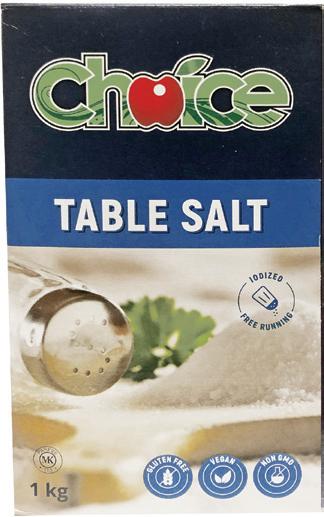





















































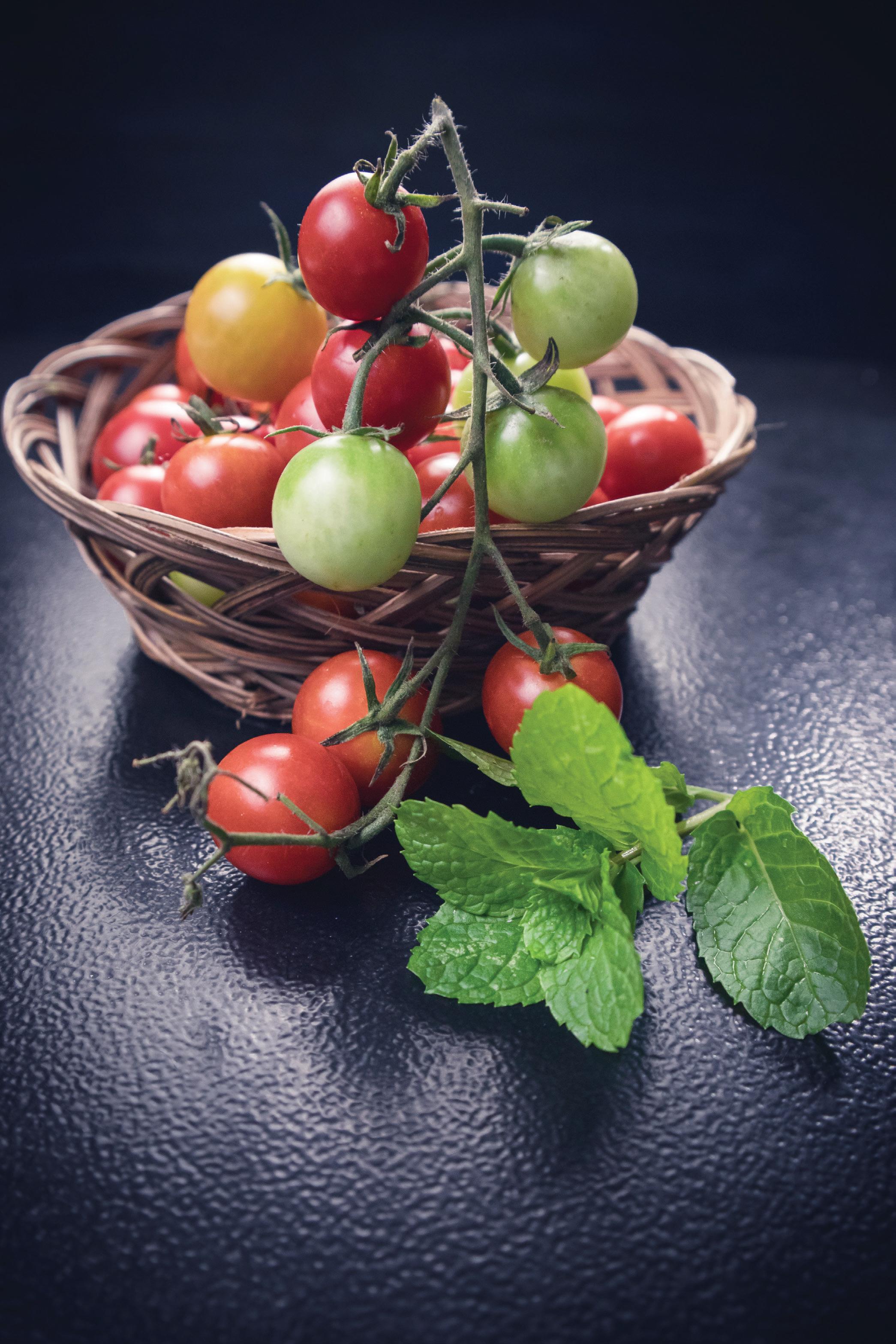











How we wish there were better ways to treat pain. Scientists are struggling to find them. The very nature of pain remains elusive too. Determining if pain is mild, moderate, or severe is a personal perception. Doctors and nurses ask patients to rate their pain from zero to ten. Whether the patient says two or 15, there’s more judgment than science in decisions about pain management. One thing is certain people managing pain at home are taking too many pills.
Pain, at best, is an annoyance. At worst, it is all consuming. It’s been said pain
can collapse the universe and concentrate the soul until only the hurt is left. Elaine Scarry, a Harvard professor and author of “The Body in Pain,” wrote that pain and “injuring” are even tools of war.
In clinical settings, even when managed well, there are negative side effects with pain treatment. Acute pain can be reduced, for example, by opioids. Medical professionals need to be cautious with these drugs, because in addition to killing the pain, side effects can include euphoria and hallucinations, plus they are highly addictive.
Some researchers have been trying to develop drugs that ease pain without these side effects by attempting to turn on and turn off cellular and molecular receptors. There is promise, but as yet no success.
Other problematic ways to beat pain include: alcohol misuse, smoking, nutritionally devoid comfort foods, and default to a sedentary lifestyle. These are not good strategies. For people suffering from chronic pain, the key is to get professional

help. A good doctor or pain management specialist will treat the pain and offer a plan to get off any drugs used in treatment.
Numbing minor aches and pain with over-the counter pain medications has become a national pastime.
It’s foolish to hope people will change their ways. Einstein said the definition of insanity is doing the same thing over and over and expecting a different result. We can only repeat the message that too many painkillers are worse than suffering a little pain. Paulo Coelho, the Brazilian novelist said, “People never learn anything by being told, they have to find out for themselves.”
Sadly, some people find out the hard way, by paying the ultimate price. A report in the Canadian Medical Association Journal shared that a billion doses of acetaminophen are taken safely each year, but ten thousand people in Canada overdose on this over-the-counter medication annually. Of these, about 4,500 people are hospitalized and estimates suggest about one hundred people die.

How and why is this happening?
Acetaminophen does not mix well with alcohol, yet people don’t read the warnings. In fact, the main cause of liver failure is an overdose of acetaminophen mixed with alcohol.
Tylenol is not the only pain reliever containing acetaminophen. People may consume more of the drug than they realize when they take multiple medications. Always read labels to make sure you’re not doubling or tripling the dose. When in doubt, talk with a doctor, or pharmacist. It’s not popular advice, but suffering a little bit is the right prescription for millions of people. Save the money spent on pain relievers and go home to get some rest instead. This goes for children too. It’s heart wrenching to have a child experiencing even a little bit of pain. In return for the hesitation to rush to medication, that child will gain a lifetime of fortitude, and common sense to turn away from drugs when other options will ease the pain.



















trishas@carib101.com
SAKRED SYNERGIIn today’s fast-paced and demanding world, stress has become an inevitable part of our lives. Whether it’s due to work pressures, relationship issues, financial burdens, or even daily hassles, stress can take a toll on our mental and physical well-being. It’s crucial to recognize that stress is not just a temporary inconvenience, but rather a powerful force that can contribute to the development of various diseases. Understanding its detrimental effects and exploring natural ways to protect ourselves is essential for maintaining a healthy and balanced life.
Stress, in simple terms, is the body’s response to any demand or threat. It triggers a series of physiological and psychological changes designed to prepare us for action. While stress can be beneficial in certain situations, like getting ready for
your wedding or a big speaking engagement, chronic and excessive stress can wreak havoc on our health. Research has shown that long-term exposure to stress hormones, such as cortisol, can disrupt the balance of our body’s systems and weaken our immune system, making us more susceptible to illnesses.
One of the ways stress contributes to disease is through inflammation. When the body is under stress, it releases pro-inflammatory molecules as a part of the stress response. While this is a normal protective mechanism in the short term, chronic inflammation can lead to a wide range of health problems, including cardiovascular disease, diabetes, autoimmune disorders, and even certain types of cancer. Disease cannot thrive in an alkalized, oxygenated cell. Inflammation causes the cells to become acidic, lacking oxygen and making room for disease to thrive.
Another way stress affects our health is by impairing our sleep patterns. Chronic stress can disrupt our sleep, leading to sleep deprivation or poor-quality sleep. Lack of sleep has been linked to numerous health issues, including weakened immune function, cognitive decline, and increased risk of chronic conditions like obesity and diabetes.
RACHEL
MARY
RILEYrachel@carib101.com

HEALTH & FITNESS
Some of us have created bad habits that keep us bound, back in bondage and in the same cycle. Gaining weight is easy but sometimes losing it can be difficult. 80% of the time some people fall back on losing weight and gaining it easily. I was one of
How is it going? Glady, I overcame it. Let’s dig a little deeper into my story and ways to prevent the yoyo experience of
Over the years I found myself in and out of losing weight and falling into depression. Thank God, I overcame it and was able to master the root reason why I fell and kept putting on weight. I had to ask myself; was it for the sake of showing off to others?


For a while it was for the sake of a spring and summer body. Eventually I got to the place where I needed to exercise selfcontrol and discipline and to know my reason why. Know that I am at the place that I am, because it is healthier. I believe carrying weight is like a spiritual thing especially if you’re not free in certain areas of your life and you find yourself into deep depression. There can be a reason why people gain weight. If you really think about it, there is always a deeper reason.
Here are a few bad habits that prevent you from losing weight.
Putting too much emphasis on exercise
You can actually lose weight even with no exercise or minimal exercise. This isn’t recommended, of course, because physical activity is good for your overall health. It illustrates the importance of diet. What and how much you eat has a much more significant impact on weight than exercise.
Ignoring food choices because you work out is a bad habit, but so too is working out too much. Overdoing exercise can backfire. Excessive exercise limits recovery and can lead to injuries that keep you out of the gym. Overdoing it can also ruin your mood and lead to emotional eating (Top 7 Habits Prevent You From Losing Weight, n.d.).
Eating mindlessly
Mindless eating simply means you’re eating without thinking. Most of us are guilty of this bad habit at least some of the time. It’s easy to be distracted while eating, to try to multi-task with work or just zone out watching TV.
Unfortunately, but probably not surprisingly, studies show that mindless eating causes you to eat more. One study found that people who watched TV while eating ate more in that sitting. Those who focused on their eating not only ate less in the moment, but they also ate less later (Top 7 Habits Prevent You From Losing Weight, n.d.).
Overindulging on cheat days
A cheat day works for some people, but for others it becomes an overindulgent bad habit, an excuse to binge. If you can have a cheat day and be reasonable about your eating, that’s fine, but if your cheat days devolve into a major binge that makes you feel sick, or bad later, it’s a bad habit you need to stop (Top 7 Habits Prevent You From Losing Weight, n.d.).
Using food as a reward
Losing weight effectively, and keeping it off, is a lifestyle change. This is why diets never truly work. You have to change your attitude and your habits. One unhealthy habit many people continue to engage in is connecting foods to emotions.
Even if you have conquered eating your bad feelings, you may still reward yourself with food. This is a bad habit because it continues to tie food to emotions, which can lead to overeating. Food is enjoyable, but it is ultimately fuel, not a reward (Top 7 Habits Prevent You From Losing Weight, n.d.).
Unfortunately, we cannot eliminate stress from our lives. However, there are several ways we can counteract the biological effects of stress on the body with the intention to stop any processes that may trigger the onset of disease.
Herbs like ashwagandha, rhodiola, lemon balm and holy basil have been traditionally used for centuries to combat stress and promote relaxation. These adaptogenic herbs work by helping the body adapt to stress and restore balance. They can regulate stress hormone levels, improve energy levels, and enhance mental clarity. These herbs target the nervous system and adrenal glands, which are considered our stress centers or the places in our bodies that react to the stress response and are impacted the most negatively when we experience chronic stress. Incorporating these herbs into our daily routine, either as teas, capsules, or tinctures, can provide significant support during stressful periods. When I drink a combination of these adaptogenic herbs, I get super relaxed and always have a restful sleep.
Natural therapies such as meditation, yoga, and deep breathing exercises are also highly beneficial in managing stress. These practices help activate the body’s relaxation response, lower stress hormone levels, and promote a sense of calm and well-being. Regular engagement in these activities can help build resilience to stress and improve overall mental and physical health.
In addition to herbs and natural therapies, certain natural supplements can provide valuable support. Omega-3 fatty acids, commonly found in fish oil or flax-
seed oil, have shown promise in reducing the harmful effects of stress on the body. They have anti-inflammatory properties and can enhance mood and cognitive function. Other supplements like magnesium and vitamin B complex can also play a crucial role in stress management by supporting the nervous system and promoting relaxation.
It’s important to note that while herbs, natural therapies, and supplements can be effective tools in managing stress, they should not replace but rather compliment a healthy lifestyle. Regular exercise, a balanced diet, and adequate sleep are vital components of stress reduction and overall well-being. We must also consider our relationships with others and our environment. Are we still engaging in toxic relationships? Do we have support and dependable people in our lives? Do we get enough sunlight or fresh air? Does the long commute to work make us anxious? There are so many contributing factors to stress, some of which as you can see, are in our control and should be addressed when seeking to manage stress in a healthy way.
Stress is a pervasive force in our lives, and its impact on our health should not be underestimated. Recognizing stress as the root cause of disease empowers us to take proactive steps in protecting ourselves. By incorporating herbs, natural therapies, and supplements into our daily routines, we can mitigate the biological effects of stress and promote a healthier and more resilient life. Remember, managing stress is not just a luxury but a necessity for maintaining optimal well-being in today’s demanding world.
I recently had the pleasure of attending a family dinner, bringing together the warm-hearted familiarity of close and extended kin. One of the attendees, my spirited little cousin Julia, brought an air of anticipation to the evening. We had not had the opportunity to engage in person for the past couple of years due to the pandemic, so it was quite a delight to catch up.
Now a baking apprentice at Humber College, Julia is diligently pursuing her Baking and Pastry Arts Management diploma at George Brown College. She spoke with such fervour about her passion for baking, leaving no doubt about her commitment to understanding the multifaceted aspects of both sweet and savoury confections. Julia’s visionary outlook includes plans to either establish her own bakery, a haven for employees who echo her passion and dedication or to masterfully whip up a variety of delectable delights from her home.
In the intimate setting of our dinner table, my older cousin, known for his insightful queries, posed two questions to me. He wanted to know my advice for Julia on her baking journey, and something I wish I had learned during my own schooling. His questions sparked a profound thought process within me, making me want to offer her more than the banalities of ‘be consistent,’ ‘work hard,’ or ‘don’t do it for money’.
I found myself drifting to a philosophy that greatly influenced my journey - a poignant reflection from the esteemed Chef Field: «Just because you’re a chef doesn’t mean you have to work in a kitchen.» This resonated with me deeply, as I always tried to incorporate my own unique talents, personality, and heritage into my culinary endeavours. My love for writing and media has found a harmonious union with my culinary education.

With this in mind, I encouraged Julia to let her background and personal history shine through in her creations. She should take a leaf out of Chef Andre’s book from Jamaica, who masterfully blends his native cuisine with classic French dishes to carve his unique culinary niche. Julia’s passion was palpable when she discussed baking bread, a subject she claimed she could do with her eyes closed. I implored her to embrace this ardour, possibly exploring different types of bread such as the enticing Caribbean coco bread.
Turning to the second question, I stressed the importance of mental and physical health. The culinary industry can be gruelling, and I wish my educa-
tion had more frankly addressed these challenges. Besides personal wellbeing, I advised Julia to harness the power of social media to share her journey, connect with a larger audience and potential customers. Documenting the process behind her creations not only humanises her, but also helps establish a connection with her followers.
Imagine my delight the next day when Julia took my advice to heart, baking coco bread and patties from scratch, and sharing her process on Instagram! It was a clear testament to the value she placed on our conversation. I was both humbled and overjoyed. With such dedication, I have no doubt that Julia will carve out her own unique path in the culinary world, resonating her passion and story with the world. Her journey has just begun, and I can’t wait to see where it takes her.
She’s been testing out her coco bread recipe and wanted to share so try it out and let us know how it came out!
Preferment
• 240 mL coconut milk
• 3g instant yeast
• 2g brown sugar
• 3g salt
• 130g all purpose flour
• 57g unsalted butter, melted
• 1 egg
Dough
• 130g all purpose flour
• 65 g all purpose flour
• 65 g all purpose flour for dusting
• Unsalted butter, softened for brushing inside and after baking
• 1 egg and coconut milk for egg wash
Method:

1. Combine all ingredients for the preferment, ensuring there are no lumps. Cover with plastic wrap and rest in fridge for at least 30 min and up to 24 hrs
2. Add remaining flour. Once a shaggy mass forms (your dough looks loose and formless) knead for 8-10 min. Form dough into a large ball, place in an oiled bowl, cover and allow to rise for 60-90 min
3. Deflate and divide into 6, 127g pieces. Form dough into balls and rest for 15 min
4. Preheat oven to 350⁰F
5. Using the dusting flour, ensure table is properly floured to prevent dough from sticking. Using a rolling pin, roll out each dough ball to 1/8 inch thick rounds, brush one half with butter and fold in half
6. Place on a parchment lined baking sheet, proof for 15-20 min
7. Brush each bun with egg wash and bake for 20-25 min
8. Remove from oven and brush the tops with melted butter while still warm
9. Allow to cool
10. 1Enjoy!
Rising to the occasion: A tale of flour, passion, and a baker’s dream
Seeing your favorite artist perform live is always exciting, but acting accordingly during a concert doesn’t hurt. There’s nothing new about concert goers throwing objects onstage during a performance, but things have been taking a dangerous turn lately.
It has been well over a decade since cell phones became equipped with cameras. The feature is now a game-changer since we often use this to take pictures and videos for Instagram and Snapchat and to create and edit TikTok’s and YouTube
videos. For the past couple of years, concert attendees have been finding ways to take their concert experience to the next level. One way of doing so is getting a performer to record a snippet of themselves with their phone. What concertgoers like to do is slide their phone onto the stage then the performer would pick up the phone and record themselves for a bit before the phone gets returned.
We have seen performers like Drake partake in this experience and help make a concert goer’s day, but this trend also has its cons. While it may be safe for attendees at the front to place their phones on the stage, it’s not so safe for those further away from the front of the stage.

In August 2018, rapper Swae Lee had to get stitches after being hit by a phone thrown at him during a Rae Sremmurd concert. Lee, who was rightfully upset, was bleeding from the lip and threatened to take legal action against the fan
before he had his mic cut. He eventually returned to the stage to finish the rest of the concert. In a now-deleted Instagram post, Lee announced he would not be suing and forgave the fan. What happened to Lee wouldn’t be the only incident of a performer getting hit by a phone.
With TikTok being one of the most popular apps, many users want to get “TikTok moments” by throwing their phones to get some good videos. So, there has been a rise in performers getting injured by fans while performing. A few weeks ago, singer Bebe Rexha was performing at The Rooftop at Pier 17 when a phone struck her in the forehead. Rexha’s eyebrow split, and she had to get stitches.
Although these other incidents did not involve phones, other singers like Lil Nas X, Pink, Ava Max, and Kelsey Ballerini also had objects thrown at them. Other celebrities have come out to address the issue and encourage people to be respectful while enjoying a concert.

“Throwing things at performers while they are on stage must come to an end. (Bebe, Ava AND NOW Kelsea Ballerini…) It’s so disrespectful and very dangerous. Please just enjoy the music I beg of you...,” said Charlie Puth on Twitter.
When promoting his new book, “Sing Your Name Out Loud: 15 Rules For Living Your Dream,” Jason Derulo encouraged performers to stop engaging with thrown objects, which could help tackle the issue. Although I’ve never attended a concert, reckless behavior makes me feel iffy about being at one. Performers are not the only ones at risk when attendees throw objects. Other concert goers around them are also at risk as well. If this behavior continues, venues may start banning cellphones at concerts, and this type of news will disappoint people who want to remember and look back on a fun night.
So, go to a concert and have your fun, just don’t hurt a performer or another concert goer in the process.
We are an obsessed crazed generation. We pour our attention deeply into whatever is most popular at the time. One thing that grabs our attention no matter what is going on is celebrities. They pull us into a different world of fantasy and desire, grip the senses and cause us to think about constant potential what-ifs. Seeing these people in person is intoxicating for some, akin to a high when they witness them in concert, or seeing them
maybe, or we are unsatisfied with our accomplishments and need a psychological escape from the stressors we have to endure. Our minds take us to places, and social media seems lavish when viewed in large doses because, as we know, nobody is posting their failures or dark days. So, we only see the highlights of what we think is a glamorous life; the cars, the talent and the brandishing of money look nice when viewed from afar.
There are caveats when it comes to the celebrity lifestyle, however. Many things behind the scenes that the general public is not privy to, from conspiracy theories to the hard-known facts of what it takes to thrive as an idol in this world, are all things to consider when looking at the life of a famous person.
Most of the time, it’s easy to get lost in your mind with thoughts of being close to any person you admire, and maybe slipping into occasional daydreams of an attractive person plays a role in our obsession. However, there is one factor that heightens every single aspect of longing: we do not know them and, in most cases, will never get a chance to speak to said person, or understand them on an intimate level. If we can never get close to a person, we can imprint our ideals on that individual’s image.
The aspect of not knowing someone is sometimes much better for our state of mind. Suppose a person we admire does something horrific. In that case, it can change our outlook on life, so maintaining distance from that person
minimizes the chances of feeling disappointed when the admiration is not lived up to. After all, these celebrities are regular people who have used their talent to impact the world. These people still have feelings, they still have bad days, get depressed and experience joy, peace and sadness like the rest of us, but we try to deify them to the point of giving them the status of more than human.
Our minds create this celebrity worship out of obsession, but mostly ignorance. The need to know who these people are and the incomplete knowledge of what it means to walk in their shoes allows our imagination to create the perfect scenario for us to feel good. How we view these strangers lull us into a place of comfort.
the purpose of establishing a Central Trade -Commerce-Diplomatic Center that would assuredly increase Canadian Trade with our Caribbean Partners. A place where Caribbean and Canadian Business can meet, interact and carry out international commerce.
The land would remain a vast park land, treed with venue operations for the young and old. The famed Caribana Parade and Festival would be headquartered and founded within and by these national interests. Land along the shoreline can be appropriated to be included in this international effort. Using this land as a financing tool with the investments from international agents will pay for much of this development. The development needs to remain property of Toronto and Ontario.
By including these international partners, much needed funds and investments will flow to the area and City. Perhaps inviting France, Middle Eastern and Asian Financiers, the EU as partners into the international mix, the revenue created and invested, and with it the partnerships benefit us all.
International vision:
Invite the Embassy and Consulates of The Caribbean Nations (our allies and friends) to establish a Caribbean Row, a consolidation of High Commission’s with
Invite to establish a permanent location for The World Fair in Toronto. This would be a great benefit to Canada’s Cultural, Economic and Political Image, making Toronto a center piece for the world to
see and experience every few years. The dreams of most Toronto Mayors and Elites would be answered, making Toronto truly an international destination. The Fair’s infrastructure would include all aspects of Toronto and Ontario’s cultural, entertainment and business sectors.
Establish a center of cultural exchange whether it be with our neighbors in The America’s, Or The EU, perhaps even Asia’s Giant China.
Domestic:
There should and would be a movement to incorporate much of the waterfront into this project, having a parkland stretch from Niagara to Oshawa. The importance of the waterfronts protection and controlled development is essential, with the Island Airport becoming an international concern and traveling hub. A possible sub-station for the Science Center can be built and developed incorporating the Toronto Aquarium into a planned Waterfront project presenting and studying the wildlife, environment of the Great Lakes. A joint effort between Canada and the USA could be developed. Partnerships with Canadian Universities and Research Agencies can make the substation something uniquely Canadian and bring international attention upon Toronto. Creating a diverse environ-
ment with attention to high technological applications may evoke attention. Inviting Tech Giants to invest and be involved makes a lot of sense, so long as Toronto, Ontario and Canada maintain control of the developments.
Should the Town Council and Province not find the energy, imagination to accomplish such developments, a protected parkland with entertainment, adventure and cultural aspects is needed. Full transit/subway access is needed and demanded.
The Federal government is the one agency that could make this happen. Both the City of Toronto and Government of Ontario lack the funds and possible eagerness to accomplish such a massive but truly futuristic project. Toronto’s financial failings can be reversed, making one of these projects a revenue generator. The economies, marketplace and governments of North, Central and South America are moving to a point of consolidation, a unity in the near future. Borders are falling, millions of people are on the move towards a better life and future. Canada has the ability to unite those divided, presenting a way to benefit all of our American neighbors here in Toronto and Canada.
So, throwing phones at performers is the new thing; seems dangerous to me
simone@carib101.com



“Simone Jennifer Smith!” Hearing my name snapped me out of my thoughts. I picked my purse off the seat behind me and stood up. “Here we go,” I said to myself.
As I turned and walked towards where I had heard my name, I saw an elderly white woman, around 65 years old; she was wearing a grey skirt and had on a white blouse. She appeared stoic, and upon first glance, I was not too sure if I liked her.
As I got closer, she smiled at me. “Hello Simone. My name is Mary-Ann; very nice to meet you.”
“Hi Mary-Ann. Nice to meet you as well.” With the formalities out of the
way, she stepped out of the way so that I could enter the office. It was exactly what I had expected; white walls, grey couch, a potted plant in the corner, some family pictures on the desk, and on the wall was a picture of a couple of ice skaters. I have to remember to tell you all a story about that photo. I took my seat on the couch, and turned back towards Mary-Ann who had come in and closed the door.
“Nice to have you here Simone,” Mary-Ann began. “What brings you into the office today?”
“Where do I begin,” I said chuckling quietly.
“Well, let’s start from the beginning. I see that your doctor referred you after taking the Beck’s Depression Inventory. When did you first start to see the symptoms that were described in the inventory?”
This is when my ego took over. The ego is a psychological construct that represents a person's sense of self and their self-esteem. It is a natural aspect of human personality and can influence how individuals perceive and interact
with the world. As a trained psychotherapist, I had invested a significant amount of time, effort, and resources into my training and development. I had developed a strong professional identity and I took pride in my: knowledge, skills, and experience. What I realize now is that this professional pride had contributed to the formation of an ego.
As I looked at this older, White woman sitting across from me, I thought to myself, there is no way that she will be able to relate to my situation. What does she know about what I had experienced. I felt myself-going inward, so instead of talking about my symptoms, I began to share with her my understanding of my feelings. For some reason, in that moment, it was important for me to let her know that I had the ability to help myself (delusion), and that I had the knowledge to do so.
After telling her about my schooling, and the work that I had done as a therapist (which she listened to graciously), I sat back on the couch proud of myself. Now, I thought to myself, now she
knows I am aware of how psychotherapy works.
Mary-Ann sat there quietly for a moment and just took me in. After what seemed like forever, she leaned in and said, “Simone, you didn’t answer my question. Tell me what you have been going through for the last few weeks, months?”
I remember feeling a little irritated by her question. In my mind I had answered it, but remember, I had spoken from a place of ego. I had not answered her question, and this is when I realized that I was avoiding it. The experience of being in therapy is far more informative than any graduate class or textbook. I was being forced to look at my neurotic issues, examine my blind spots. I did not think that I was going to react like this. I leaned back on the couch and really thought about the question. I still didn’t know how telling this woman about what I had been through would help; in my head, she just would not understand.
In addition to the large, planned voyage west cited in the last edition, there could have been others for which the memory has been lost. Furthermore, there could have been involuntary migrations. Any vessel lacking an independent source of power that gets caught in the North Equatorial Current would end up in the Caribbean even if the crew did not set out to get here. The prevailing ocean currents would have made it relatively easy for Africans to travel to the Caribbean. It was these same currents that brought Columbus here and facilitated the traf-
ficking of Africans across the Atlantic to the Caribbean.
Lest some question the ability of West African fishermen to survive an Atlantic crossing in an open boat; here are some documented accounts of survival under such circumstances. Poon Lim was stranded at sea on a raft for 133 days on the Atlantic after a U-boat torpedoed his ship during World War Two. He was eventually rescued off the coast of Brazil.
Maurice and Marilyn Bailey spent 117 days adrift in the Pacific in a rubber dinghy after a whale off the coast of Guatemala capsized their yacht in 1973.
Scottish sailor Dougal Robertson survived for 38 days with five others in a small dinghy in the Pacific Ocean in 1972, after their schooner was holed and sunk by killer whales west of the Galapagos Islands.
US adventurer Steven Callahan survived 76 days in a life raft in the Atlan-
tic in 1982 after a whale rammed into the hull of his vessel.
Columbus left the Canary Islands on September 6th, and, carried along by the North Equatorial Current, arrived in the Bahamas Archipelago on October 12th, a total of 37 days.
According to renowned American historian and linguist Leo Weiner of Harvard University, in an article titled "Africa and the Discovery of America," in The American Historical Review, Volume 26, Issue 1, October 1920, Pages 102–103 one of the strongest pieces of evidence to support the fact that black people sailed to America before Christopher Columbus was a journal entry from Columbus himself. In Weiner’s book, “Africa and the Discovery of America,” he explains that Columbus noted in his journal that the Native Americans confirmed that “Black skinned people had come from the south-east in boats, trading in goldtipped spears.”
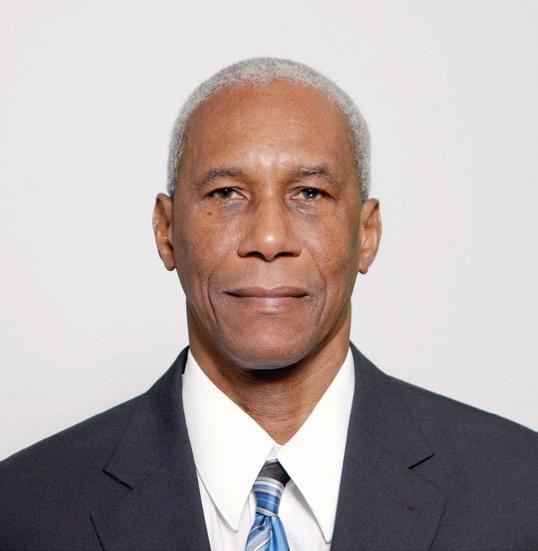
As Dr Julian Whitewright, a maritime archaeologist at the University of Southampton, explained, the voyage from Africa on ancient ships was “Quite a plausible undertaking, based on the capabilities of the vessels of the period and historical material stating it took place.”
Let’s not forget that in 1970 the Norwegian explorer Thor Heyerdahl and an international crew sailed the Ra II the 6,100 kilometres from Morocco to Barbados in 57 days thereby proving that there could have been contact between the Mediterranean region (or West Africa) and South or Central America prior to Columbus’ voyage.
So, while there may be some who will not consider any of this as incontrovertible proof that Africans reached the Caribbean before Columbus, the preponderance of evidence suggests that this was indeed the case, at least for the black populations of Panama and Guatemala.
Discussion on the origins of some African populations in the Caribbean, Part II



THE HEIGHTENED CHEF
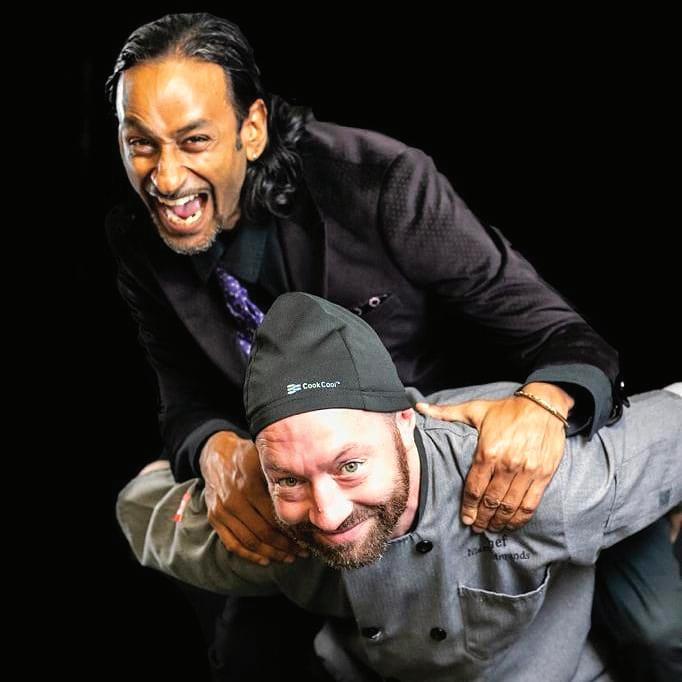
as each of us struggled to contain the smokes first touch to our lungs. Soon the effects took hold and we marvelled at a new world around us. A bond had been created between us that lasts decades later to this
day. Only much later did I realize that strength of cannabis is not in the high but in the who. As in, who you’re with while consuming.
Cannabis has medicinal qualities that already make it invaluable, but it goes far beyond this. Cannabis has a social effect that cannot be quantified. It creates a communal chemistry between consumers not easily replicated. The desire to connect with others who are similarly elevated and share our experiences supersedes all boundaries that might separate us. This same desire is the cornerstone to our lifestyle and community. Over the course of many years, we have proven that cannabis connects diverse groups that might not normally interact but find bond through safe, responsible shared consumption.
This brings us to the point of this article, spaces where adults can freely share and safely consume cannabis in Canada are sorely lacking. In fact, they are nonexistent. While the Cannabis Act was long overdue, its drafting seemed rushed by corporate interests anxious to open the flood gates to the world’s newest industry. Absent from its content is any information or even indica-
tion of public consumption spaces. Currently in federal law the only place to consume without restriction is at home. Anything beyond this is largely left to provinces and in some cases even municipalities. Most places in Ontario have adopted policies that fall in line with Smoke-Free Ontario Act started in 2006 and amended in 2017 to include cannabis and vaping. This essentially limits consumers to outdoor areas. Being forced to go outside or go home in order to consume cannabis is a tragedy that desperately needs correcting. Many situations like living conditions or weather can cause both options to become unviable. Harm reduction is an issue for novice users who are forced to consume in unsupervised and unmonitored spaces. Creating further division between the legacy and legal market consumers is counterproductive to the nations strategy to eliminate criminal elements from the industry. Economically, our entire society needs a boost after emerging from a 2 year long pandemic hibernation, especially in the hospitality sector which is where consumption spaces would exist. On that same note and most importantly, the human connection that
comes from shared experiences free of judgement or stigma is missing from the community that thrives on it.
Understandably, public health and safety must remain top priorities in decisions about legislation. However, there are more than enough considerations above to at least begin a thoughtful, equitable process towards opening cannabis consumption spaces. At great risk to themselves, some brave trailblazers like The Heightened Chef, HotBox Café or Vapour Central have created the mold for what shared consumption spaces can look like and support the communities that would use them. Years later, we only now see larger corporate stakeholders beginning to follow suit by funding consumption events like the Kind Summer Fair scheduled for Toronto in upcoming weeks. Even this is still a far cry from where the state of cannabis consumption spaces should be. Try to imagine a world where you could purchase alcohol but there were no bars, pubs or restaurants where you could enjoy it. Use your voice and your vote to ensure this is NOT the world where cannabis remains.
Annuals often feature abundant blooms that are positively eye-catching. While it’s relatively easy to find low, medium-sized flowers, it can be difficult to get your hands
on large, majestic ones. Here are four annuals that stand tall and proud.
1. Dahlia. Some varieties of this beautiful flower can grow up to two metres in height. However, it’s best to stick to a single colour and find a type that doesn’t grow taller than one-and-a-half metres.

2. Cosmos. This thin and delicate flower is available in beautiful pastels like white and pink. It’ll wow your neighbours and attract butterflies and birds to your yard.
3. Cleome. This beautiful ball-shaped flower is often overlooked at greenhouses and nurseries because it rarely blooms at the start of spring. Give it a chance — you won’t regret it.
Do you work from home? Whether you want to escape distractions or enjoy some fresh air, moving your office outside could boost creativity and productivity.
Depending on your needs and the available space, you can create an open office by installing an overhang on your deck to protect you from the weather and the sun’s powerful rays. This option is ideal for summer. However, it may not work when making calls in the middle of a rainstorm. Therefore, you may want to build a complete room, similar to a converted shed, which can be used
year-round.
Above all, your workspace must be functional to ensure you’re as productive as you usually are in a traditional office setting. You must also have access to electricity and a stable internet connection. You may also need to consider investing in an air conditioning, ventilation or heating unit.
If a backyard office appeals to you, work with local businesses and contractors to make it happen.
While most pests are easy to spot in your garden, some are difficult to see with the naked eye. One example is the red spider mite. This pest is less than half a millimetre long and only makes itself known when your plants start to suffer. Here’s how to spot red spider mites and eliminate them.
Unlike the name suggests, red spider mites come in various colours, including brown, orange and green. They suck the nutrients and chlorophyll direc tly from your plant,
which causes the leaves to turn yellow and dry out. If left unchecked, this can cause the plant to die. Moreover, red spider mites don’t act alone. In fact, a single plant can be attacked by hundreds or thousands of mites.

The easiest way to spot red spider mites is to use a magnifying glass. You can also try pressing the plant’s foliage to a sheet of white paper. If the paper becomes covered in tiny, moving specks, your plant is probably infested.
Red spider mites thrive in hot, dry weather. Therefore, regularly watering helps prevent them from multiplying. Additionally, you can use a powerful spray nozzle to blast red spider mites off the leaves of your plants. However, if one plant is infested, you may want to dig it up to prevent it from contaminating nearby vegetation.
Finally, if you suffer from repeated red spider mite infestations, you can encourage or purchase predatory insects to take care of the problem. You can also use horticultural oil or insecticidal soap to keep these pests under control.
4. Canna. This bulbous plant tends to bloom late in the season. Therefore, it’s best to plant it indoors four to six weeks before the last frost. Better yet, you can buy dwarf varieties that fill out quickly.
Horticulturists and landscapers generally recommend limiting yourself to two or three colours and three or four species to maximize their visual impact.
Borders help define the different parts of your landscape and simplify maintenance. Here are four edging materials to make your yard look great.

1. Aluminum edging is sleek, durable and flexible. Moreover, it can withstand the changing of the seasons without warping.
2. Concrete edging is available in a variety of styles and sizes. You can also choose from several shades to perfectly match your landscape. Although durable, concrete borders are semi-permanent, making it difficult to change the shape of your flowerbeds on a whim.
3. Plastic edging is affordable and can be made into virtually any shape. However, it’s not as durable as other edging options and may need to be readjusted from one season to another. Additionally, some plastic borders can’t survive the winter and must be replaced every year.
4. Wood edging is timeless and easy to install. If you want to change the look of your landscape without moving anything, you can easily repaint wood borders.
Don’t hesitate to contact a landscaping professional for expert advice and installation.

nels and allow rainwater to filter through. Add extension pieces on any downspouts at least five feet from the foundation and into green space. Plant shrubs and other flora native to your area around the home because these will help to prevent the soil from eroding, and the roots act as a natural vacuum for water.
Imagine a sewer backup during a rainstorm, and your basement has a brew of raw sewage. Then, most of your items in the basement would get damaged. Many homeowners store important papers in cardboard boxes on the basement floor. Put important things in water sealed containers on top of a table or, better yet, keep them on the upper level.

are battery-operated, and you can place them on the basement floor in various locations, such as near windows, sinks, furnace rooms, and washrooms. If any water is detected, the alarm will go off like a smoke detector.
When it rains, it pours, and basements can flood. Heavy rainfall in 2000, 2005, and 2013 flooded the GTA. With climate change, extreme rainfall will occur often. Homeowners have alarms and insurance for fire, but few have any protection against flooding. How can homeowners prepare themselves?
Disconnect the downspout from the sewer system. It is now mandatory to disconnect downspouts attached to the storm or sanitary sewer system because water from rooftops flows directly into the sewers, causing the system to reach its capacity and, as a result, water and raw sewage back up into homes. An overtaxed sewer will affect all the houses in the area, not only those with downspouts connected directly to the sewer. Another major problem is that rainwater from the roof is polluted with roof shingle granules which contribute to sludge buildup, reducing the sewer’s capacity and contaminating our water source. The soil acts as a natural filter if the downspouts discharge onto a lawn or garden.
Install and maintain a good gutter system. Homes without gutters or those with rotten or clogged eavestroughs will cause the rainwater to stay around the foundation, eventually damaging the foundation and entering the basement. To avoid leaves from clogging the eavestroughs, install leaf guards which can fit over the existing chan-
Installing a sump pump is worth the trouble. Sump pumps are installed in a hole below the basement floor and have a float that raises when the water level increases, activating a pump that pumps water out before it reaches the basement floor. When installing a sump pump, homeowners should obtain a building permit and hire a licensed contractor. Install a battery-operated backup power supply in case there is a power failure. Test the sump pump often by filling the hole with water. For homes with existing sump pumps, connecting the sump to the sewer system to allow excess water to flow into the sewer drain is illegal.
Check for any cracks in your home foundation wall. Small cracks in the foundation wall will store water which will freeze in the winter and expand the gap. Use a water sealant to seal the cracks. Replace old weather stripping and re-caulk around windows and doors. Poor lot grading can result in basement floods. Add more soil around the foundation to create a gradient sloping away from the foundation. Roots from trees and shrubs close to the foundation can crack basement walls. Avoid planting trees close to the foundation. Small ornamental plants can add beauty and prevent erosion. If the home has a window well, add a transparent cover and keep it debris-free.
Refrain from storing important papers or expensive items in the basement.

Install a backwater valve. A backwater valve closes the sewer line during a flood. A building permit is needed. A licensed plumber can do the job and once completed, must pass city inspection. When the backup valve is closed, you should not use plumbing fixtures such as showers, sinks, toilets, dishwashers, or washing machines because water cannot drain and will go back into the basement.
Install water detectors. Water detectors


Check for subsidy/grant programs. The Federal government has various grants and subsidies to protect your home from flooding. In addition, Ontario and different cities have their subsidy program. Check with your local City Hall to see how you can access these grants and subsidies.
A wet basement, especially with sewage, will cause a mold infestation. In most cases, a homeowner must gut the entire basement and leave it to dry out. This venture is expensive, and I suggest checking with your insurance company to see if you have flood protection.
Ignoring certain noises in your home, or simply getting used to them, is a risky gamble. If you’re not careful, they could be the harbingers of a problem that could end up costing you dearly. Here are four noises that warrant your attention.
1. Cracking sounds from your wood floor. Although you may have an old home, if your floor suddenly starts cracking more than usual, you should be worried. It could be an indication that you have termites, abnormally high humidity levels — caused by water infiltration, for example — or a structural problem that must be corrected by repairing the subfloor.
2. Squeaking sounds from your washer or dryer. This sound indicates that two metal parts are rubbing against each other at high speed, even if the noise is barely audible. Ignoring it could lead to expensive repairs or, worse, having to replace your appliance.
3. Rattling from your windows. Your windows should never vibrate, even if it’s windy. Rattling noises are caused by two elements coming into contact. This is often an indication that the frame needs to be repaired or replaced. If you don’t deal with the issue, the glass could wear out or crack.
4. Water dripping sounds from your walls. Can you hear water running, but all your taps are turned off and you’re not operating any appliances that use water? The sound of running water may indicate a pipe problem that only a plumber can fix. By ignoring this sound, you give mould free rein to grow.
Not sure what’s causing the noise? Contact a professional to find out.

Heat loss from a poorly insulated attic can cost you a lot of money. As winter approaches, consider the benefits of using cellulose fibre to insulate your attic.
What’s it made of?
Cellulose fibre is an environmentally friendly, affordable material made from recycled, shredded newspaper or wood fibre. Minerals are added to the fibre to prevent it from catching fire or being damaged by insects or mould.
What are the advantages?
Cellulose fibre has one of the highest R-values (thermal resistance) on the market. What’s more, unlike other popular insulants, it’s natural and non-irritating. It also provides excellent soundproofing.
How is it installed?
Cellulose fibre must be applied using a machine with a hose. The machine blows the material into the space so that it’s injected under pressure. This task requires at least two people: one who feeds the machine and another other who
inserts the product into the attic cavities.
Trust the experts for professional installation.
Consumers are increasingly concerned about their ecological footprint and want to support companies that care about the well-being of their employees. When it comes to furnishing, decorating or renovating their homes, sustainability and eco-responsibility reign supreme. Here’s an overview of some of the trends in interior design.

Furniture
Locally designed and manufactured furniture made from recycled materials is all the rage. Be wary of extremely cheap imported furniture, as it may have been manufactured using toxic products by companies that don’t value human rights. Various shops also sell second-hand furniture in excellent condition. Keep an eye out!

Accessories
It’s becoming less and less common to buy new cushions, rugs or picture frames just to throw them away after a few years when they get broken or discoloured. Just as in the clothing industry, fast fashion is receiving criticism in the world of interior design because it contributes to the depletion of natural resources and feeds landfills.
Material
When refinishing your floors, for example, opt for wood certified by the Forest Stewardship Council (FSC) or a composite material made from wood residue or recycled plastic. When it comes to painting, look for paints made from renewable minerals or plant-based raw materials. If you need to rework the structure of your home, opt for recycled steel.
Finally, if you need to buy new household appliances or replace your doors and windows, choose products with an ENERGY STAR rating.
4 sounds in your home you shouldn’t ignore
PUZZLE NO. 793 ANSWER
Each 3x3 box is outlined with a darker line. You already have a few numbers to get you started. Remember: You must not repeat the numbers 1 through 9 in the same
WEEK OF JULY 16 TO JULY 22, 2023
The luckiest signs this week: VIRGO, LIBRA AND SCORPIO
ARIES
Self-esteem is essential for personal development. You’ll be recognized for your accomplishments, which will fill you with pride. If you’re single, having more self-confidence will get you noticed by the right person.
TAURUS
You don’t have to go far to have an amazing summer vacation. Staying home and spending time with family is all you need. If you manage your time wisely, you’ll be able to see all the people you haven’t seen in a long time.
GEMINI
You’ll feel restless and strike up conversations with several people. You’ll spend hours discussing everything under the sun to get to know the people around you. You’re naturally curious and will read anything you can get your hands on.
CANCER
Although you’re still unsure about something, you’ll look ahead and move forward with determination. You’ll find the means to start your own business or treat yourself to a dream holiday.
LEO
A little excitement could do you good, as would maintaining dynamic relationships with your loved ones and developing new friendships. One activity won’t wait for another. The New Moon could cause some confusion.
VIRGO
A little accumulated fatigue could slow you down. Try catching up on sleep. On the job, extra work combined with colleagues on vacation will force you to double your efforts.
LIBRA
Managing your social accounts will help you engage more effectively. You could organize a spontaneous trip or getaway with your loved ones, from which you’ll bring back many unforgettable memories.
SCORPIO
You may take on a renovation or building project that will double the value of your home. The effort you put into improving your home will fill you with pride. Someone close to you will suggest an exciting outing.
SAGITTARIUS
ANSWER TO PUZZLE NO. 83
You’ll be given the opportunity to go on a getaway. You’ll be inspired by a pilgrimage or spiritual activity. You may spend more time practicing new meditation techniques.

You’ll have to get a handle on your emotions for one reason or another. You’ll be called on for your generosity. At the very least, you’ll have to take care of a loved one. Fatigue and stress could affect your mood; take some time off.
The new moon is the perfect time to create more harmony in your life. You could come across a new job opportunity, even in the middle of summer. You’ll have to choose between two offers from people close to you.
The summer holidays are fast approaching! However, you won’t take any time off until you’ve finished all your chores. At home, a deep cleaning or renovation project will bring you much satisfaction. Someone close to you will need you.
LAND FOR SALE IN TOBAGO:
10500 Square feet near Mount Irving Golf course. Approve by Town and Country Edward 647218-1333.
2009 JEEP CHEROKEE: 4x4, extremely great condition, certified in January, keyless entry. Asking $7000 selling as is. Call 647-8584660
LAND FOR SALE IN TRINIDAD:
Land for sale in Chaguanas
Orchard Gardens approx 5,000 Square feet. End lot $250K CDNWhatsApp # 647-848-3931
FOR SALE: Homes for saleLange Park, Chaguanas, Trinidad - 3 bedroom, 2 bathroom, fully a/c 400k CAD. 437-929-6750
WANTED COOK : Someone to cook once a week at their home large order of Roti, curry chicken and curry potatoes. Cost to be discussed. Email postiexyz@yahoo.ca
HIRING: Looking for a helper to do general labour, garden cleaning, landscaping, and winter snow removal. Cash paid weekly. Located at Morningside & Lawrence in Scarborough. Please call: (416)269-5174.

Some restrictions may apply. We reserve the right of refusal.

Laparkan is looking for a Warehouse Associate in Shipping and Receiving.
No experience necessary. Will train on the Job.
Send Resume to hrca@laparkan.com or call 416-292-4370
SHARED ACCOMADATIONS:
1
available in basement apartment with Side entrance Shared accommodation, Male only , No parking, no smoking or drinking Everything included. $900. Medowvale and Sheppard Call 647-447-2377
LOOKING
LOOKING FOR A JOB: 29 years old male looking for a looking for a job. Sanjay 437-484-5151
SUNDAY SERVICE: Fountain of Truth Ministries Pastor: Reverend Maxine Campbell Worship Address: 2170 Kipling Avenue, Etobicoke Percy Johnson School – Cafeteria Sundays: 10.am – 2. pm Teaching, Worship, Ministering For info call: 416 748 0211
MISSISSAUGA: Mississauga Missionary Baptist Church invites you to join us at 1620 Dundas St West, each Sunday at 10am for praise, worship and in-depth Bible teaching with Pastor Sean, 416-219-9137
We are in the process of expansion and constantly looking for the best of the best! Dedicated salespeople; people interested in opportunities to help others while also being able to help themselves. For more information, please contact Trish 647-722-6298 or trish@carib101.com






























If you’re launching a new product or service, implementing a go-to-market (GTM) strategy can be the difference between thriving and barely staying afloat. A well-crafted GTM strategy can improve brand awareness and increase your sales. It can also improve the efficiency of your rollout and reduce overall costs, resulting in higher profits.
How to create a GTM strategy
Your GTM strategy outlines your company’s goals, budget, target market and approach to marketing and sales. Take the following steps to create an effective GTM strategy:
• Define your goals. What do you want
to achieve with your new product? Do you want to increase sales, improve brand awareness or something else?

• Identify your target market. Who are you trying to reach with your products or services? What are their pain points, and what are the solutions?
• Develop a marketing and sales strategy. How will you reach your target market and generate leads? How will you close sales?
• Create a budget. How much money will you need to implement your strategy?
• Get feedback. Get feedback from your team, customers and other stakeholders. This will help you identify poten-
tial weaknesses and make improvements.
• Measure your results. How will you measure the success of your GTM strategy? Track your results so you can see what’s working and what’s not.
• Be flexible. The market is constantly changing, so it’s important to be flexible. Be willing to adjust your plans as needed.
BDC Small Business Week takes place from October 15 to 21, an excellent occasion to learn more about developing a GTM strategy to make your small business sustainable and successful.
Small business is the backbone of the Canadian economy. These enterprises, which include many local shops and contractors, drive innovation, create jobs and foster economic growth. In recognition of BDC Small Business Week, taking place from October 15 to 21, here are seven facts highlighting the importance of Canadian small businesses:
1. About 98 per cent of all businesses in Canada have fewer than 100 employees, making small businesses a dominant force in the entrepreneurial landscape.

2. More than 80 per cent of the private
sector workforce is employed by small and medium-sized enterprises (SMEs), demonstrating the critical role of small businesses in job creation and employment opportunities.
3. Small businesses in Canada contribute about 53 per cent to the country’s GDP, underscoring their substantial economic impact.
4. Small businesses accounted for about 43 per cent of all goods and services exported by Canadian businesses, showcasing their contribution to international trade.
5. Small businesses are active in various sectors, with the highest concentration
in professional, scientific and technical services, retail trade and construction.
6. Small businesses play a vital role in rural communities, accounting for 26.5 per cent of total employment in rural areas.
7. Small businesses are often the breeding ground for innovation, with more than 41 per cent of all private sector investments in research and development being made by SMEs.
This year, you can observe BDC Small Business Week by supporting the small and medium-sized businesses in your community. Visit bdc.ca for more information.
If your business has a website, maintains a social media presence and uses online marketing campaigns, it’s important that you take full advantage of all data regarding traffic, click-through rates and purchases. This information will help you retain your current clients and attract new ones. Here are a few types of data to help you make sense of your digital performance.
Calculating the number of unique visitors your website gets, on which pages they spend time and the geographical location where they reside provides you with critical information with which to evaluate your current marketing strategies.
You can also determine whether visitors found your website through a search engine or a social media website. This is valuable information you can use to craft more targeted campaigns.
Tracking the number of clicks per visitor and how long they spend on each of your website’s pages can tell you a lot about its quality. If visitors tend to leave quickly, it may be time to think about a redesign. Similarly, if they never seem to visit important pages, or any page past the homepage, a revision of the site or of your marketing strategy may be in order.
Tracking customer satisfaction through survey results is a good way to identify your platform’s strengths and weaknesses. If you have an e-commerce component, you can also identify popular products. This will help you define effective marketing strategies to attract new customers and retain current ones.
To get the most out of your online presence, determine which indicators are the most relevant to your business. There’s a lot of data out there and using it could help you more than you realize.


















Are your windshield wipers streaking, squeaking, skipping or splitting? If so, it’s not surprising. Wiper deterioration is a common consequence of winter driving and nothing is harder on them than ice and snow. As soon as wipers are no longer functioning optimally, and visibility is compromised, it’s imperative to get them replaced. This is quick and easy to do — you just need to know a few basic things.
What types of wipers are available?
There are three main types of wipers:
• Conventional wipers. These wipers are the most affordable. They’re durable and reliable.
• Aero wipers. This type of wiper adheres better to the windshield, ensuring a streak-free cleaning.
• Hybrid wipers. Offering the best of both worlds, these wipers are basically heavy-duty aero wipers.
What size should I buy?
The size of wiper you need depends on the
type of vehicle you own. You can consult your owner’s manual to find out how long they should be. Alternatively, you can go to an auto parts store: most have a computer in which you can input your car’s information in order to learn what wiper size you need.


How are wipers removed and installed?
Removing wipers is usually a simple matter that requires little more than unhooking them. However, the precise method to do so depends on the type and brand.
Installing new wipers is just as easy and involves simply hooking or clipping them on. The packaging will contain instructions to guide you. However, this is a service that most auto shops will perform inexpensively or even for free when you purchase wipers from them.
If your wipers are no longer functioning well, don’t wait to swap them out — visibility is essential to staying safe on the road.


Thanks to electric ignitions and trip computers, regular tune-ups are no longer a necessity. However, be sure not to neglect changing your spark plugs. While some new cars come equipped with extended-life spark plugs, which can last up to 160,000 kilometres. If your spark plugs aren’t of this variety, you should swap them out at around 50,000 kilometres. Carmakers typically recommend that they be changed every
48,000 to 64,000 kilometres so as to ensure optimal fuel consumption and engine efficiency. Fortunately, spark plugs aren’t expensive, with the cost being only a few dollars per plug. While you’re at it, you should also change your spark plug wires (their lifespan is about 80,000 kilometres). Deteriorated wires will detract from the efficiency of your new spark plugs.
Do you carry all your keys on the same key chain? If so, you would be wise to remove your car key from the bunch. The heavy weight of multiple keys will place a burden on the car key, and therefore the ignition switch, while driving. As you accumulate miles behind the wheel, the weight of a bundle of keys, together with the effects from bumps and vibrations, can cause the lock housing to wear prematu-
rely and eventually lead to your vehicle’s starter failing. In extreme cases, the ignition switch is tugged out and the motor shuts off.
To keep your ignition switch in good working order for many years, keep your car key on a light key chain that holds no more than one or two other keys. Heeding this advice could spare you a huge expense in the long run.


